
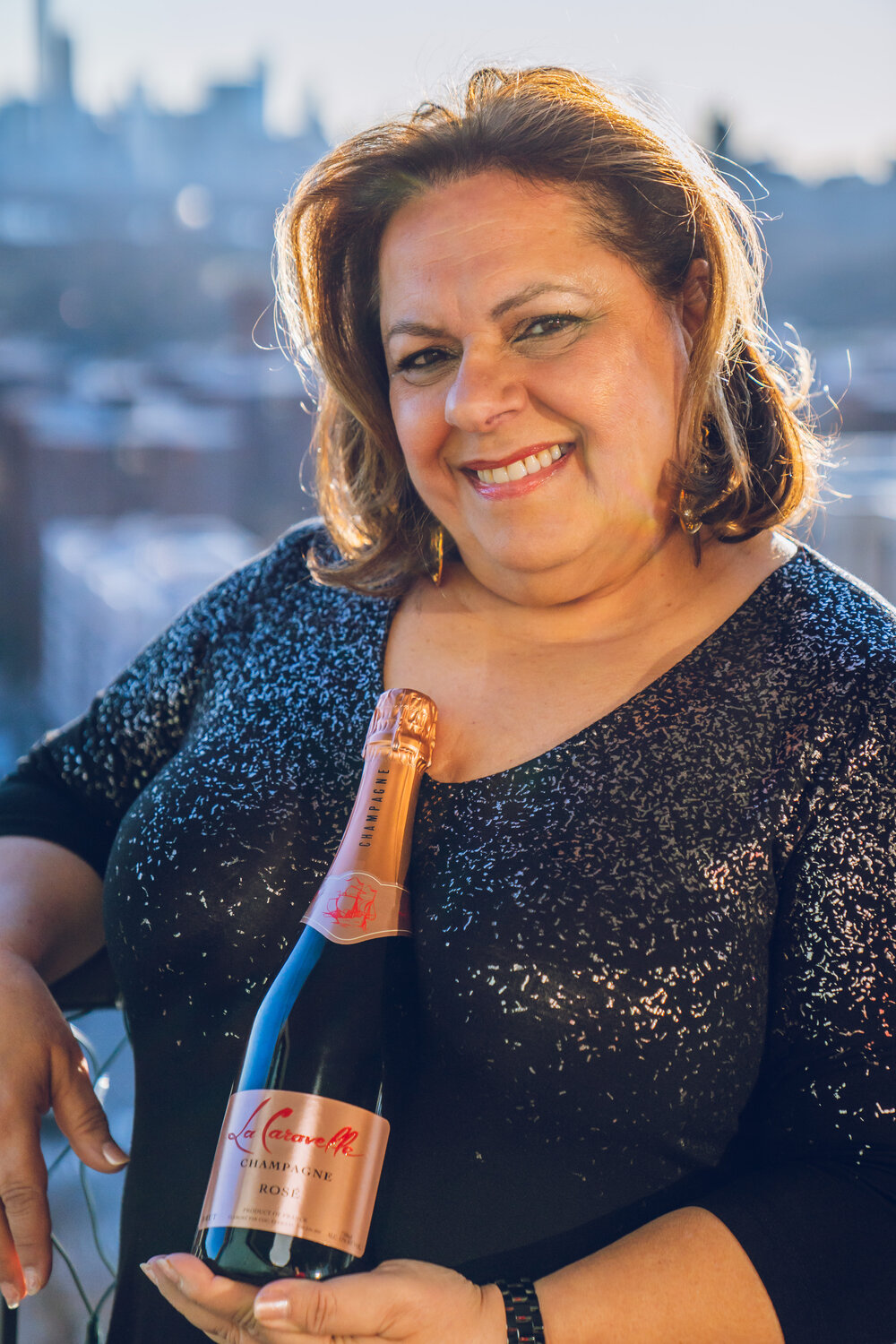

No wine embodies Summer quite like rosé and sparkling rosé is truly the epitome of casual Summer elegance. To guide us on a Summer-inspired, sparkling rosé adventure and get you in the mood to “drink pink”, episode #25 features the fabulous Rita Jammet, lifelong Champagne lover and CBO (Chief Bubble Officer) of La Caravelle Champagne.
As co-proprietor (with her husband André) of one of New York City’s most iconic French restaurants for 20 years, Rita created exceptional dining experiences for some of the world’s most famous names (you simply MUST tune in for all the glamorous details!). It was her unique insight into hospitality and fine dining gained during this time that helped her to reinvent herself and establish La Caravelle Champagne when the couple decided to close the restaurant in 2004.
Today her delightful, food-friendly Champagnes are enjoyed in prestigious restaurants around the globe and her down to earth, drink-what-you-like approach to wine combined with her naturally warm, gracious personality make her the perfect Ambassador for the region and its iconic wines. So whether you’re wondering how these special wines are made, what glassware to use and/or what foods to pair with sparkling wine - Rita’s definitely got you covered!
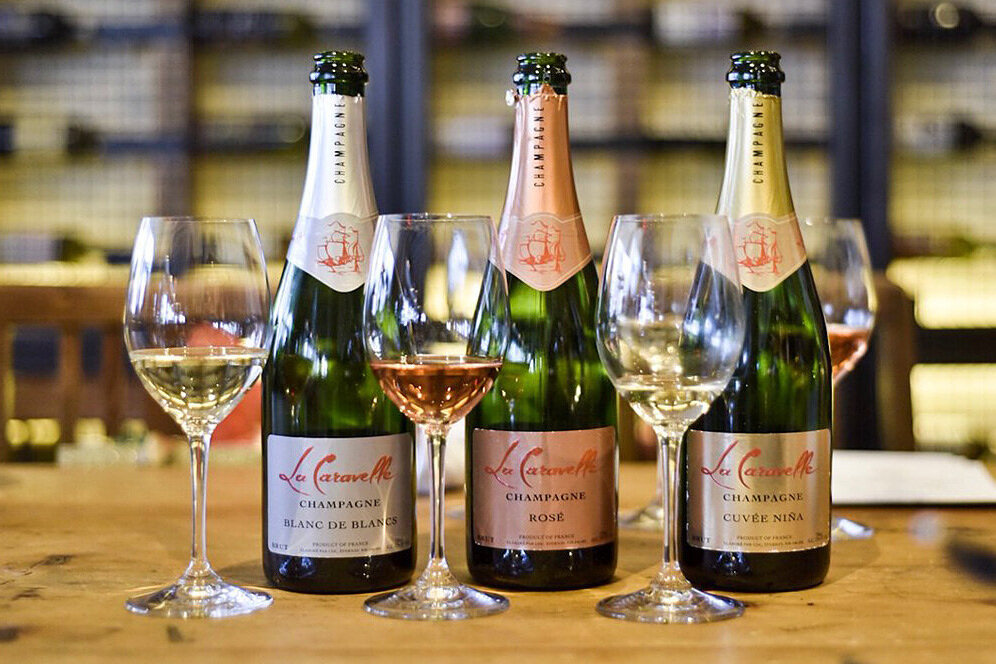
So please pour yourself a glass of wine (preferably rosé!), kick back and relax and enjoy Episode #25 of The Wine Atelier Podcast featuring the delightful Rita Jammet as she gets us excited for enjoying rosé this Summer and shares the amazing story of La Caravelle Champagne!
1.) How Rita combined her love of Champagne and 25+ years of experience running an iconic French restaurant into La Caravelle Champagne.
2.) Rita’s concept of “double magic” when it comes to Rosé Champagne.
3.) The surprising way La Caravelle’s Brut Rosé Champagne is made and how it gets its gorgeous pink color.
4.) Why Champagne is SO food friendly and which dishes Rita loves to pair with Brut Rosé.
5.) Which glassware you should definitely stay AWAY from when serving Champagne!
- Champagne + Sparkling Wine 101
- All the details on the “saignée” method of making rosé
- Glassware mentioned: Zalto Denk’Art, The One by Andrea Immer Robinson, Gabriel-Glas
– To share your thoughts, please leave me a note in the Comments section below + click here to listen to previous episodes of The Wine Atelier podcast.
– To spread the word about The Wine Atelier podcast, please share this link on social media, in e-mails or anywhere else you like (Thank You in advance!).
– If you enjoyed the show, please click here to go to iTunes and SUBSCRIBE to so you don’t miss a thing – AND – your honest review on iTunes are greatly appreciated!
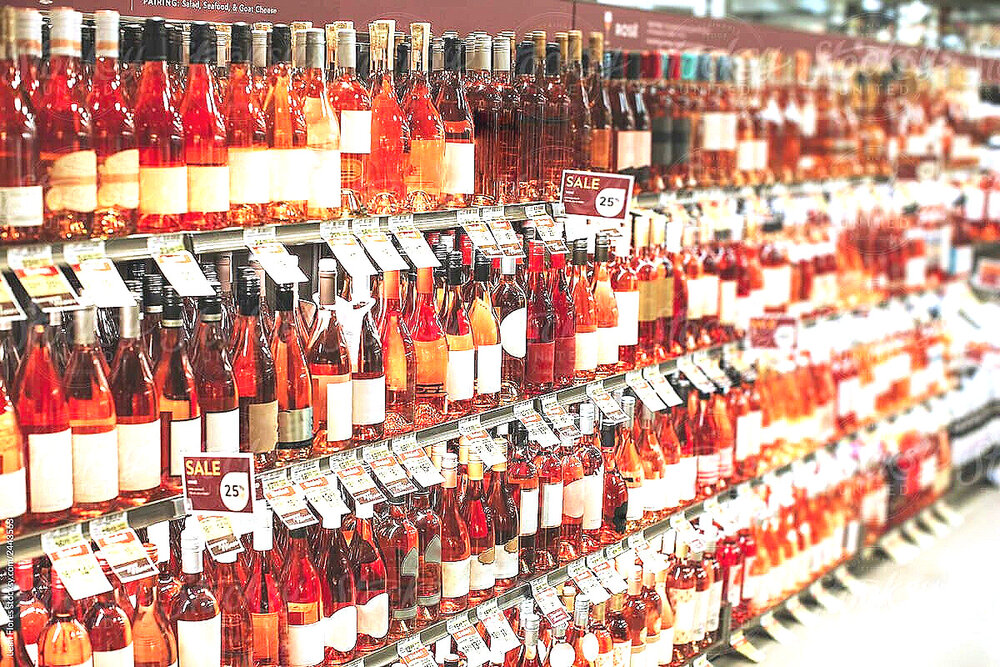
While the global pandemic has essentially derailed every wine event since early March, it couldn’t stop a small, yet determined group of rosé-loving Sommeliers in South Florida on a recent Friday in June.
While initially scheduled for April, the judging portion of The Rosé Competition had been postponed…and then postponed again. As a judge, I had pretty much resigned myself to the fact that it probably wasn’t going to be rescheduled anytime soon. But thankfully our fearless leader, the fabulous Shari Gherman, co-founder of The American Fine Wine Competition and all around vinous badass, made a very gutsy decision.
During the reopening phase here in South Florida, Shari gave us the option of participating in a scaled down version of judging process. She assured us it would take place in a highly sanitized, masked, properly socially-distanced environment in a venue where access, sanitization and logistics could be absolutely guaranteed. She made it clear there was no pressure to participate, and while I initially hesitated, knowing Shari like I do and having worked with her and been the beneficiary of her incredible professionalism for many years, I trusted her implicitly.
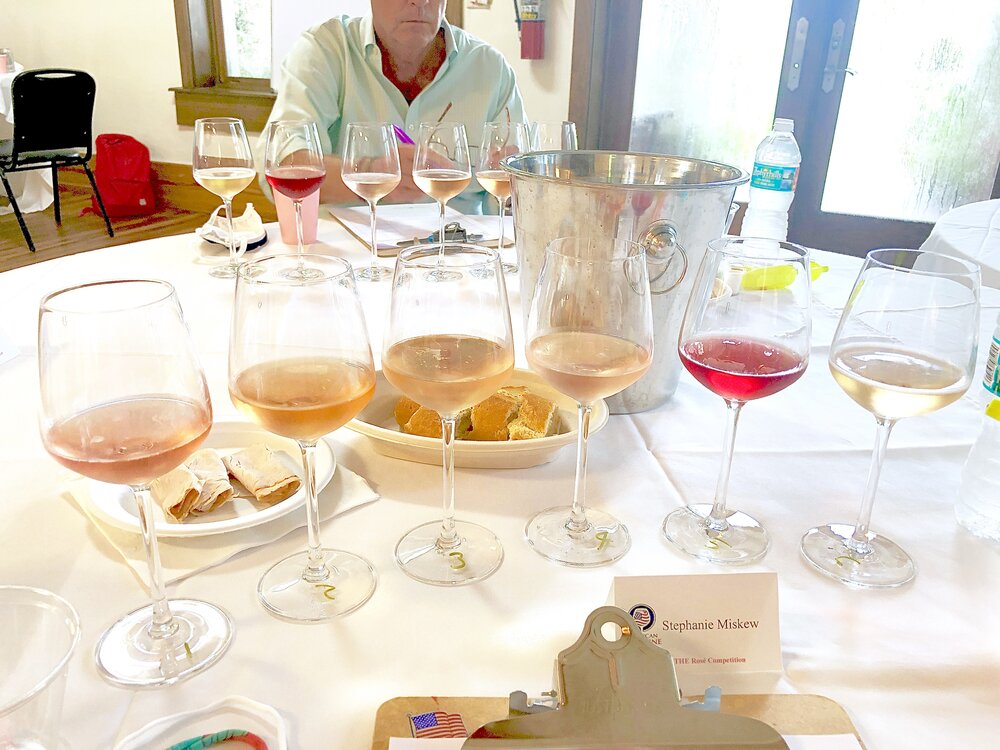
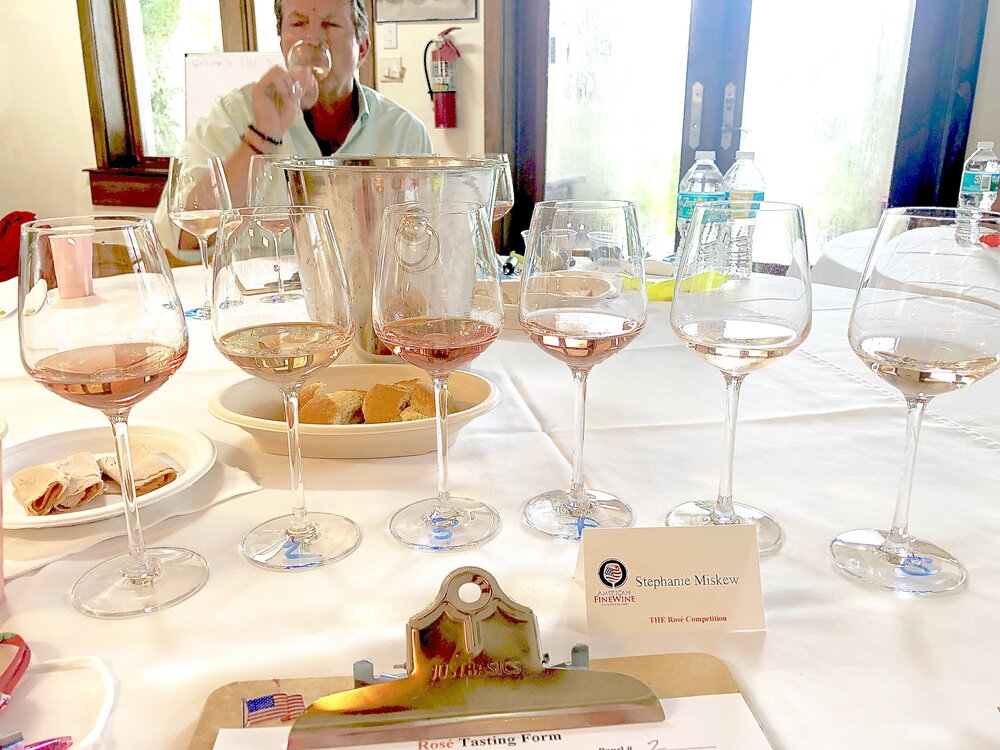
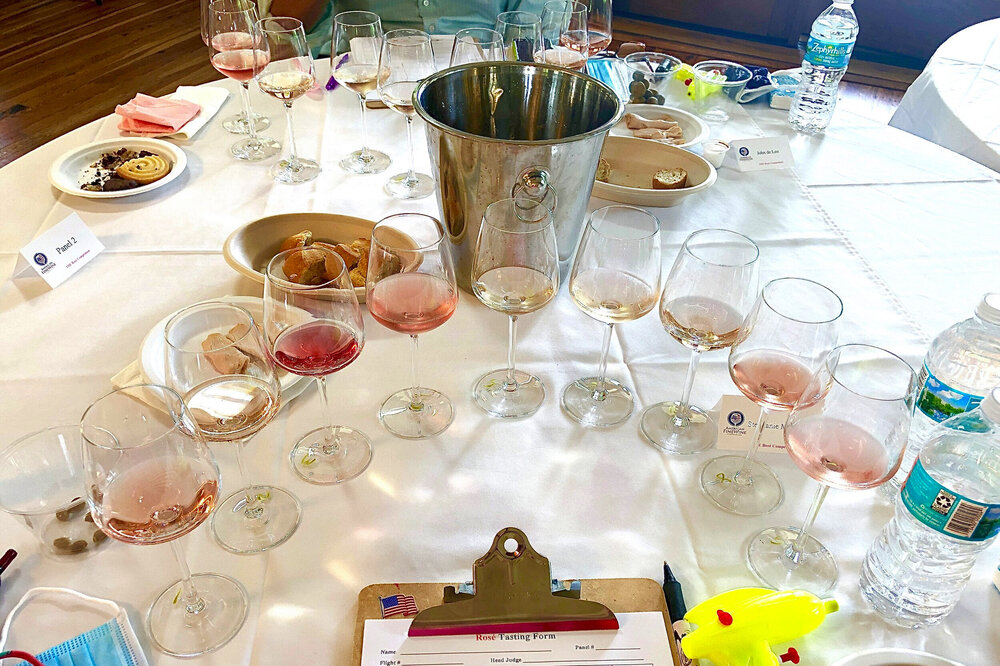
And I’m really glad I did!
The judging experience proceeded as promised and, over the course of a day with the help of our indispensable, fully gloved and masked Wine Angels, we worked our way through the numerous flights of rosé until we pared the selections down to our winners in both the still and sparkling categories.
As a huge fan of all things sparkling I was elated to hear California’s Domaine Carneros Brut Rosé ($44) took the top spot for the second year in a row. This is truly a testament to founding winemaker Eileen Crane’s 40+ years of experience making beautiful, classic Méthode Traditionelle sparklers inspired by its founder, Champagne Taittinger. Even as she retires this year, her wines continue to set the bar for sparkling wine in the US and undoubtedly will for years to come. (For more on Eileen’s fascinating career, please check out my podcast interview with her here)

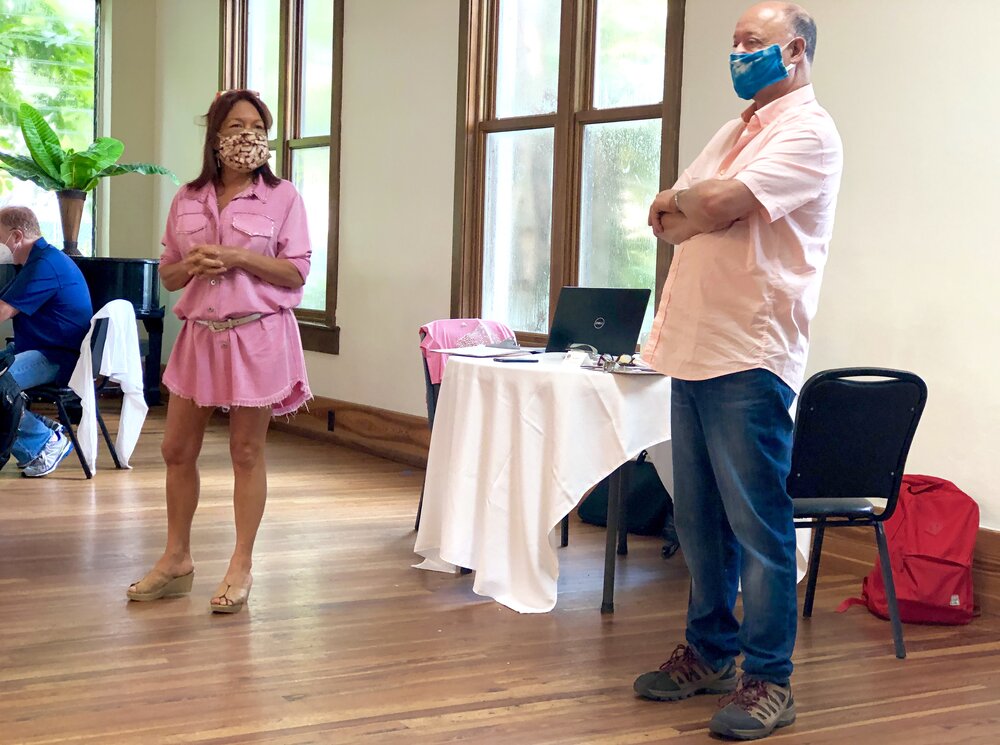
Runners up in the sparkling category include Syltbar “Il Concerto” Rosé ($23), an organic wine made from Merlot grapes from Friuli, Italy; the Brengman Brothers Ca’del Borgo Extra Dry Rosé ($18) from Michigan; and the final double gold medal winner in the sparkling wine category was Domaine Carneros Cuvée de la Pompadour ($44) - one of my all time favorites!
In the still rosé category, I was surprised to discover the winner didn’t hail from Provence as many might expect given the recent #RoseRevolution that’s largely attributed to the popularity of Provençal rosé. And it didn’t come from California either. No, the winner of the still rosé category came from the Leelanau Peninsula of Michigan! The Brengman Brother’s Block 7 Rosé ($25), crafted entirely from Pinot Noir grapes, captivated the judges and nabbed the top spot this year.
Runners up in the still category include the BACA Rosé ($24), made from organically farmed, Lodi Zinfandel grapes (and conveniently available in a three-pack of cans) and from Russian River Vineyards two selections earned double gold medals, the Giana May Rosé ($30) made from Pinot Noir grapes and their Petite Sirah Rosé ($30) from the Wedge Family Vineyard.
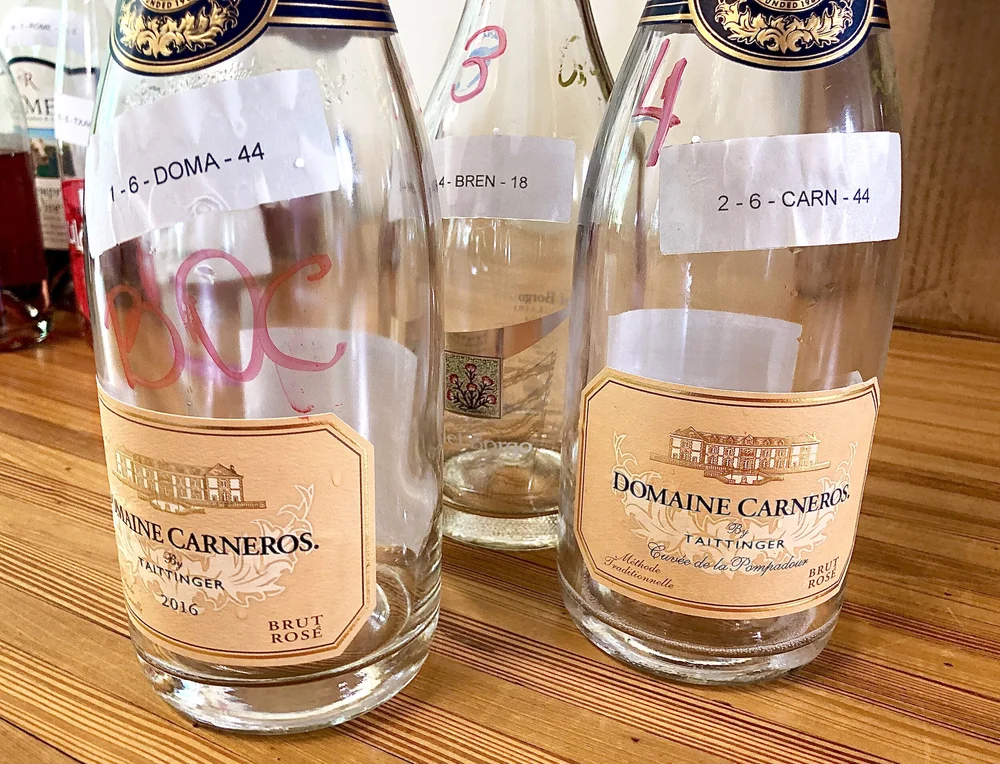

Rounding out the Double Gold medal winners in the still category were, the Ravoire & Fils Costeval Rosé ($15) from Coteaux d’Aix en Provence; Château des Garcinières Cotes du Provence Rosé ($26); the SMAK “Summer” Rosé from Walla Walla and the Bricoleur Vineyards Estate Grown Rosé of Pinot Noir ($32).
Cheers to Shari Gherman and Bob Ecker for their enduring dedication to this competition and for making the judging component of the 2020 Rosé Competition possible this year. As a judge, I’m thrilled to see so many exciting rosé-producing regions represented, from Provence, France to the Leelanau Peninsula of Michigan!
Please feel free to share this post with your fellow rosé lovers and help spread the word about all of these amazing wines. People need to know about them now more than ever! And for the full list of results including additional gold and silver medal winners, please visit The Rosé Competition website by clicking here. xo

Summer breeze, makes me feel fine, blowing through the jasmine in my mind.
Ah Summer! The intoxicating season that inspires feelings of carefree bliss and joyful abandon and is usually spent frolicking on a white sandy beach or other equally relaxing locale. And, as with all seasons, Summer has its own unique coterie of flavors and signature dishes that are an intrinsic part of the seasonal experience. During these warmer months, we usually seek out lighter fare with bright, lively flavors that takes full advantage of the abundant seasonal produce Mother Nature provides.
Below is a breakdown of some classic Summer flavors - just looking at it makes my mouth water and inspires me to combine these elements in oodles of delicious ways! And since my goal is to help you Empower your Palate, please take a minute to study it and jot down some combinations that sound especially appealing to you.
For instance, I love to combine crispy prosciutto, basil and burrata cheese for a delicious and easy Summer dinner. In addition to the ingredients, be sure to keep in mind the method of preparation as well, instead of braising and roasting, Summer is the perfect season for grilling and even using citrus juices to do the cooking for you (aka denaturation).

The wines we gravitate to in the Summer share many of the same characteristics as our favorite foods, they’re usually lighter-bodied with bright flavors ranging from tangy, tart citrus to juicy red berries that are usually complemented by a lively acidity.
In light of the global pandemic, however, this typically carefree season is going to play out a little differently for most of us this year. We may forego our Summer travels and social outings, and opt to stick closer to home instead. For that reason, this Summer is the perfect time for creating seasonally-inspired pairings in the comfort and safety of your own kitchen.
For many of us, our kitchens have already provided much needed respite from all the pandemic stress and become a sanctuary where we nourish ourselves and our families (for 5 Ways to Find Joy in your Kitchen this year, please click here). This post is intended to inspire and awaken your senses to the flavors of Summer and encourage you to indulge and enjoy them in your own home. Below are three of my favorite Summer-inspired food and wine pairings (all wines are $25 or less), please feel free to prepare them “as is” or use them as inspiration for creating pairings of your own:
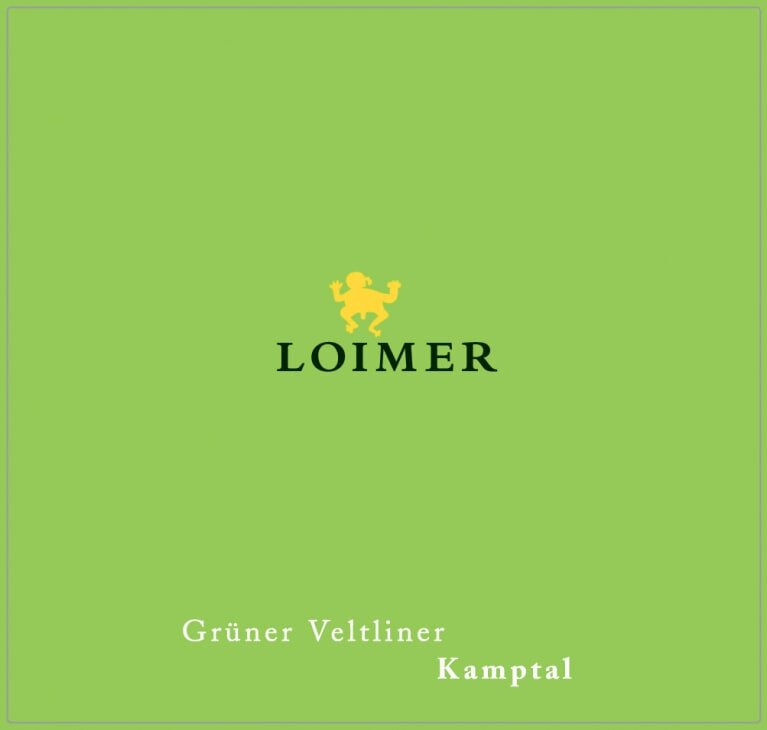
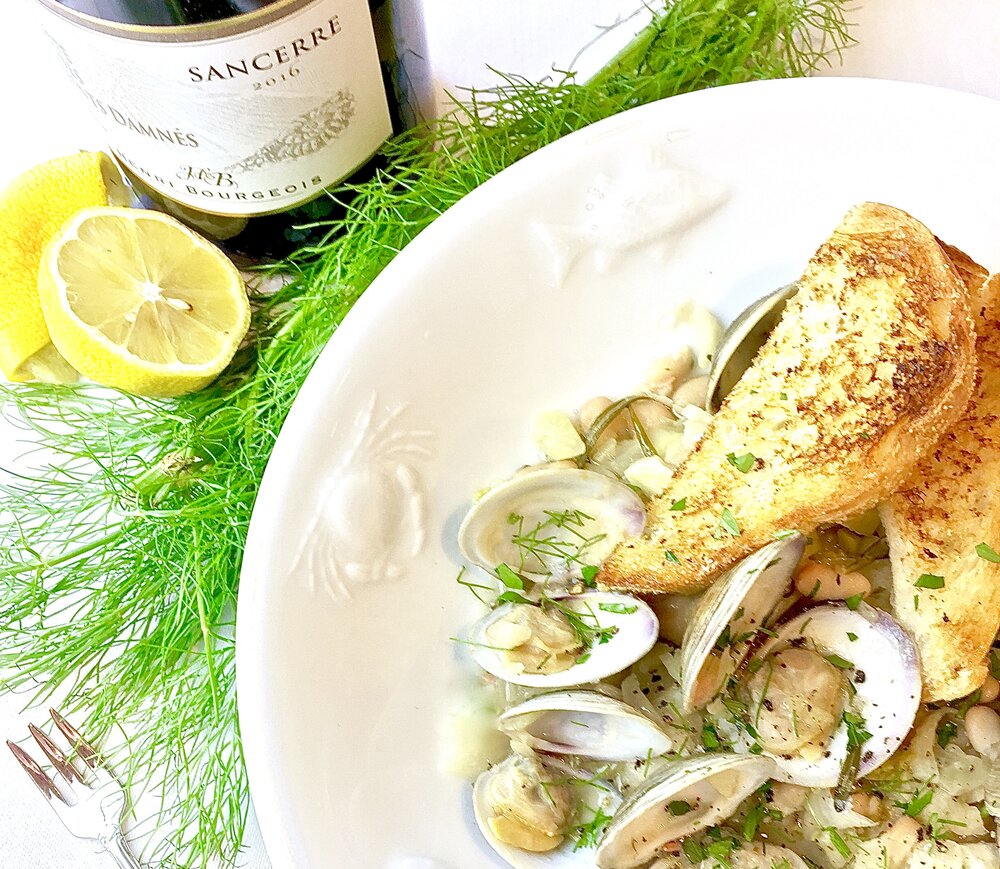
WINE #1: Loimer Grüner Veltliner Langenlois Kamptal, Austria ($16): I couldn’t think of a better place to start than with the delightful, signature white grape of Austria, Grüner Veltliner. This grape produces charming, lively white wines known for possessing aromas and flavors of green apple, citrus and stone fruit accompanied by an endearing peppery, spicy note. This wine is also perfect for Summer enjoyment because it’s generally fermented in stainless steel tanks. These large, neutral containers preserve the fresh, fruity characteristics of the grape itself without imparting any secondary aromas or flavors like oak barrels do. So, when shopping for Summer whites, gravitate towards those that are “stainless steel fermented” and you’ll be rewarded with crisp, refreshing wines that will delight your palate and pair with a variety of Summery dishes.
FOOD PAIRING #1: Clams with Fennel + White Bean Sauce: This pairing works for a few different reasons, (1) the weight of the wine matches weight of the food, and by that I mean neither one overwhelms the other; (2) the flavors complement each other beautifully, the citrus of the wine acts like a squeeze of lemon on the clams, and (3) the textures create great synergy as well, the creaminess of the wine harmonizes nicely with the creaminess of the white beans.
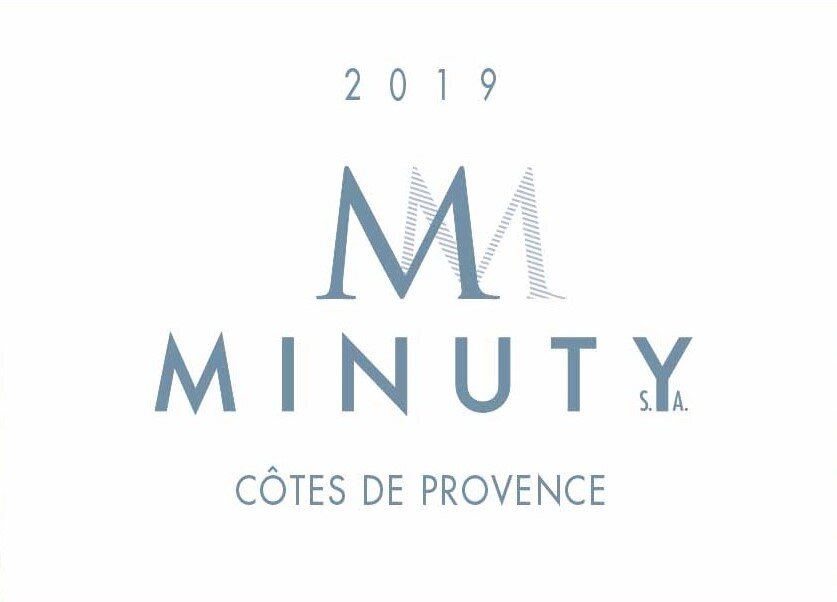
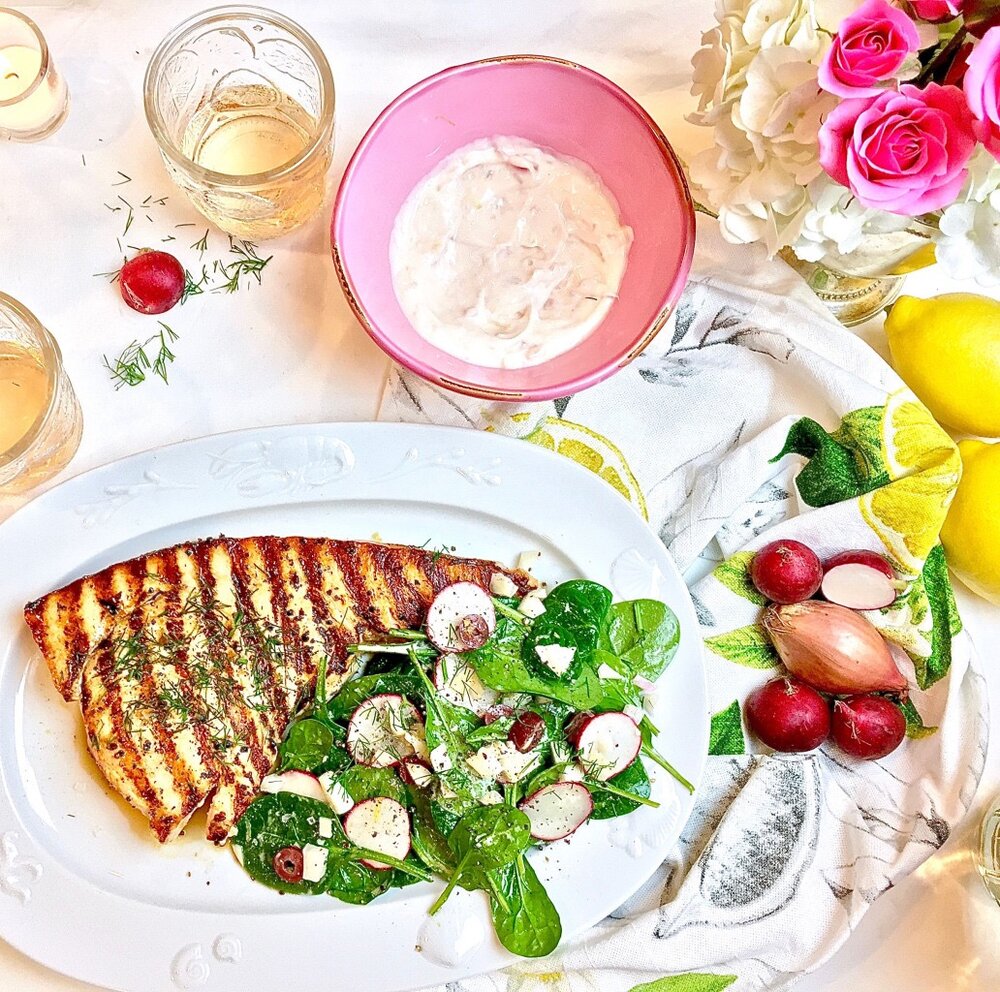
WINE #2: Château Minuty “M” Cotes de Provence Rosé, Provence, France ($18): Established in the 1930’s, Château Minuty has been making rosé for over 80 years - long before the relatively recent #RoseRevolution! Located on the breathtaking St. Tropez peninsula with vineyards a stone’s throw from the ocean, Château Minuty is the best selling rosé in Cannes, Nice and St. Tropez. Their classic Provençal, rose petal pink rosés are crafted from predominantly Grenache, the superior rosé-making grape, as well as additional regional grapes including Cinsault and Syrah. This wine has beautiful aromas of soft red berries, minerals and lavender while on the palate wild strawberry, cherry and spice predominate along with a cleansing, refreshing minerality. For more on the fascinating Château Minuty, please check out my interview with owner Francois Matton by clicking here.
FOOD PAIRING #2: Grilled Swordfish with Rosé Aioli + Fennel, Olive + Spinach Salad: This pairing follows one of my favorite pairing principles of ALL time, “If it grows together, it goes together.” Who can argue with centuries of culinary research found in these Old World regions? Aioli is a mayonnaise-like mixture of garlic, olive oil and salt that originated in the South of France and I must say, something truly magical happens when you combine rosé with garlic! And then add the combination of Mediterranean flavors including the olives and fennel and the glorious texture of the swordfish and you’ve got INSTANT synergy!
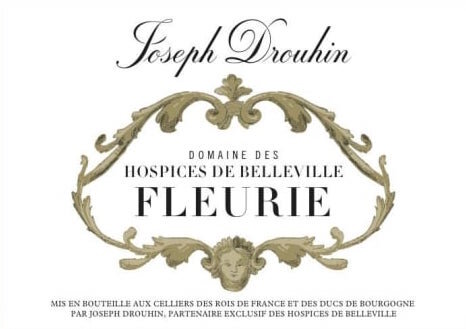

WINE #3: Maison Joseph Drouhin Hospices de Belleville Fleurie, Beaujolais, France ($25): Beaujolais is the southernmost part of France’s world renowned Burgundy wine region. But unlike Burgundy’s famous, yet notoriously pricey Pinot Noir-based red wines, the red wine of Beaujolais, which are made from the Gamay grape, represent one of the best values in the wine world today. Gamay produces wines with a lovely translucent red color, high acidity and minimal tannins. And since they are usually fermented entirely in stainless steel (remember that?) the wine’s fruity characteristics are allowed to shine which, in this case, include enticing notes of rose petal, black cherry, plum and a hint of spice. It’s important to note that when shopping for Beaujolais, avoid the mass-produced, insipid Beajolais Nouveau wines. Instead, you want to seek out “cru” Beaujolais wines that will have the name of one of ten unique villages on the bottle. These villages produce the best examples of these wonderful wines and are still a phenomenal value, these are the names to look for: Fleurie, Chénas, Brouilly, Côte de Brouilly, Moulin-à-Vent, Morgon, St. Amour, Chiroubles, Régnié or Juliénas.
FOOD PAIRING #3: Quick Coq au Vin: If you’re looking to get your French on this Summer but don’t want to slave over a hot stove for hours, try this positively deeelicious “Fast + Fabulous” version of this classic French dish that’s ready in about 30 minutes. Once again, this pairing features a wine and a dish from the same geographical region so just go with the flow! And while Coq au Vin is typically made with a heavier, Pinot Noir-based Burgundy, using a lighter-bodied Gamay makes the dish perfect for Summer. Incorporating thyme also gives the dish some lemony lightness and lift and feel free to substitute white meat chicken if you like but the chicken thighs are ooooh soooo gooood!
Everybody’s palate is different, but nobody’s palate is wrong.
***An important thing to keep in mind when shopping for these or any wines and a key step to “Empowering your Palate” is developing a good relationship with your local wine store. Because, as you may have already discovered, all wines are unfortunately not available in all places at all times. So when you visit your local shop, ask for the featured wines and if they don’t currently have them in stock, and this part is KEY, simply ask for something similar!
For instance, if you’re looking for the aforementioned Drouhin Fleurie Beaujolais and they’re out or don’t currently stock it, ask if they have a Fleurie from another producer. And if they don’t have a Fleurie, ask if they have any Cru Beaujolais that’s similar - it’s really that easy! Sometimes the shop will even order the wine for you, it’s always worth asking. Once you develop a good rapport with a sales person you’ll also feel more comfortable “talking the talk” of wine and you’ll also have someone who can anticipate which wines you might like based on the wines you’ve already purchased.
I hope this post inspires you to go forth and celebrate the flavors of Summer, even if this year it means doing it in a slightly different way in the unexpected comfort of your own home. And instead of it being the Summer you missed out on your favorite trip to the beach because of the pandemic, it could be the Summer you discovered your new favorite wine. xo
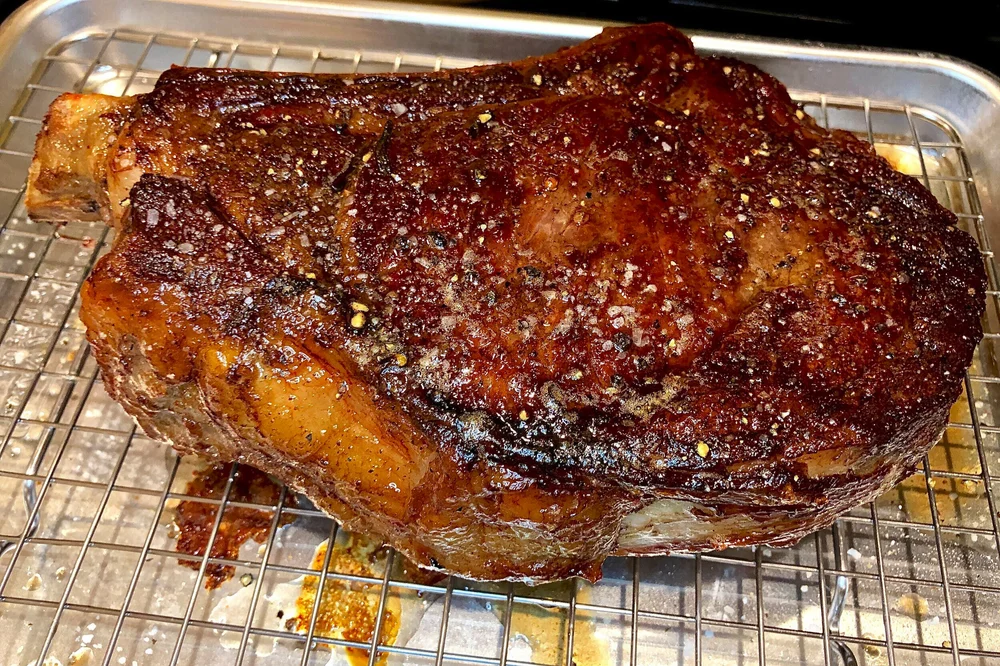
I must confess, the Hubs and I were in somewhat of a steak rut when he approached me one weekend, with a recipe in hand and a question. We have a longstanding tradition of cooking steaks on Sunday (#SundaySteaks) and he had just read about a technique called the “reverse sear” that he really wanted to try. As the primary steak maker in the house, I thought, “sure, let him challenge my methods and further reinforce how amazing my mad steak skills are,” and I relinquished my beloved cast iron skillet for the evening.
And WOW am I glad I did! The reverse-seared steak was utterly delicious, not to mention, stunningly beautiful!
We’ve been happily experimenting with the “reverse sear” method ever since and it is currently our preferred method of making steak. Unlike some other cooking methods that have gained popularity in recent years, this one is straightforward, user friendly and doesn’t require any expensive, specialized equipment - a major #petpeeve! All you need are kitchen essentials like a good cast iron skillet, meat thermometer, quarter sheet pan with a rack, and, of course, the steak itself. More on that later.
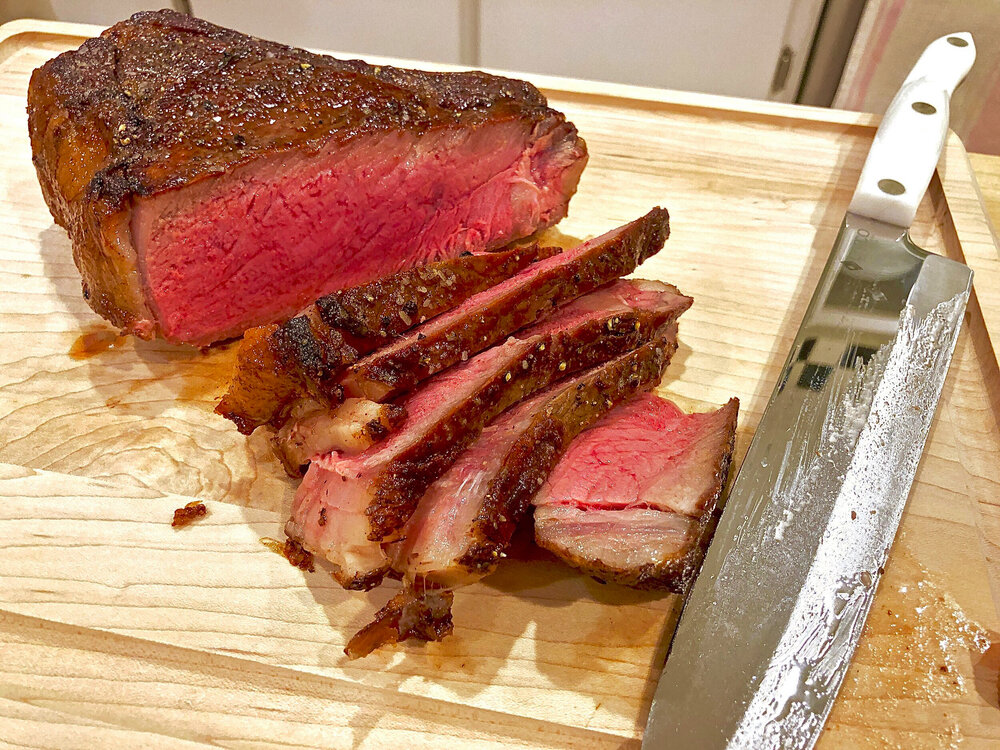
The “reverse sear” technique is exactly that, reversing the two main components of cooking a steak. Normally, a steak is first seared in a screaming hot pan on both sides before it is then finished in the oven to the desired level of doneness. The “reverse sear” on the other hand calls for the steak to first be roasted at a low temperature in the oven to the desired level of “doneness”, and then finished in the pan to form that mandatory, glorious, outer crust.
Sounds easy enough, right? That’s because it is! Here are some reasons why you should definitely try the “reverse sear”:
No expensive cooking equipment or excessive amount of time are required.
Cooking the steak at a low, slow temperature allows the steak to cook slowly and evenly.
For best results, use a thicker, bigger cut of meat which practically guarantees leftovers!
By roasting the steak BEFORE searing it, you have more control over the cooking process.
You can add your favorite herbs to the butter during the finishing, searing process which infuses the steak with incredible flavor.
As for the steak, we recently discovered Wild Fork Foods, an emporium of over 500 different types of meat ranging from chicken to alligator tail. All of their meat is flash frozen at the peak of freshness to lock in all if its amazing flavor. For the reverse sear method, it’s best to use a thicker cut of meat, and a bone-in option is even better. We love their Bone-in Black Angus Beef Florentine Steak, an impressive, 2-1/2 inch thick cut steak that’s inspired by one of our favorite Tuscan steaks of all time, Bistecca alla Fiorentina.
This Florentine classic is essentially a bone-in Porterhouse steak that is gloriously marbled, has delightfully complex flavors and a luxurious, buttery texture. Other cuts that work well with the reverse sear (and again the thicker the better), include the ribeye, NY strip, T-bone, tri-tip and filet mignon.
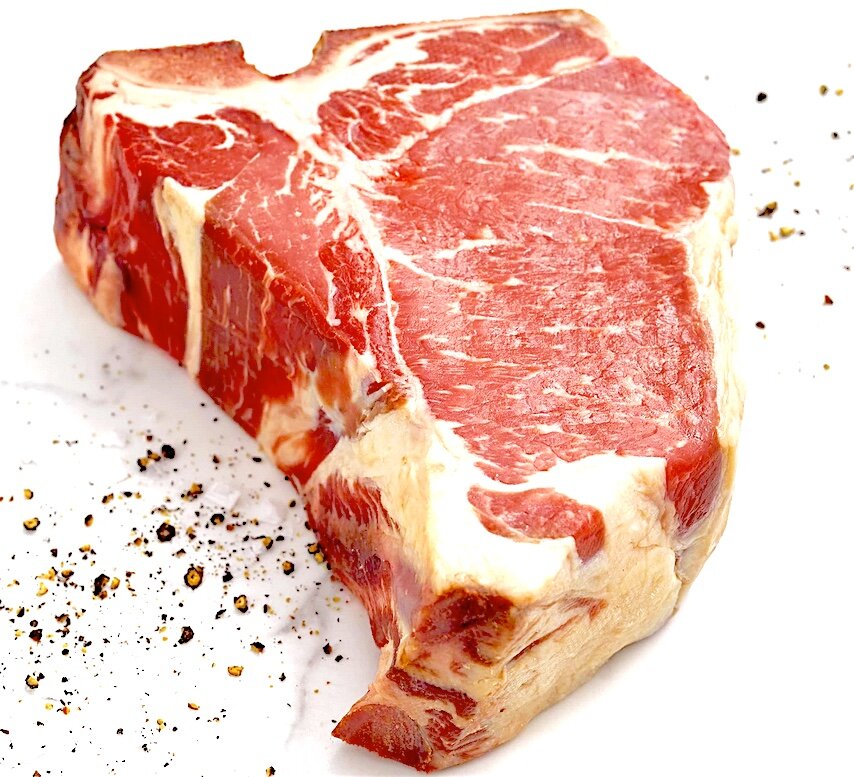
Your meat thermometer is going to be a key factor in determining when the steak is done cooking in the oven, especially in the beginning. For rare, shoot for an internal temperature of 110 degrees; for medium-rare (our favorite!), the internal temperature should be 120 degrees; for medium, the internal temperature should be 130 degrees; for medium-well, the internal temperature should be 140 degrees; and for well-done, well you should be arrested if you would do that to a beautiful piece of meat like this so please DON’T and shoot for a temperature below 140 degrees!!!
So finally, as promised, here are 5 Simple Steps to Mastering the “Reverse Sear” Technique:
1.) Preheat your oven to 300 degrees, the low temperature allows the steak to cook slowly and evenly. We also allow the steak to come to room temperature for about 30 minutes before going in the oven.
2.) To prepare the steak, pat it dry with paper towels to remove any moisture and season it generously on both sides with Kosher salt and freshly ground black pepper. Place the steak on the rack in the sheet pan and slide it into the preheated oven. For the majestic, 3-1/2 lb. Florentine steak, it usually takes about 35-40 minutes to achieve the desired internal temperature. But, depending on the cut of meat you chose (remember, bone-in cuts will take longer), be sure to have your handy meat thermometer on hand to guide you.
3.) In the meantime, prep your cast iron or other heavy skillet by adding a super thin layer of neutral oil (i.e. grapeseed, vegetable) to it and placing it on a burner over high heat.
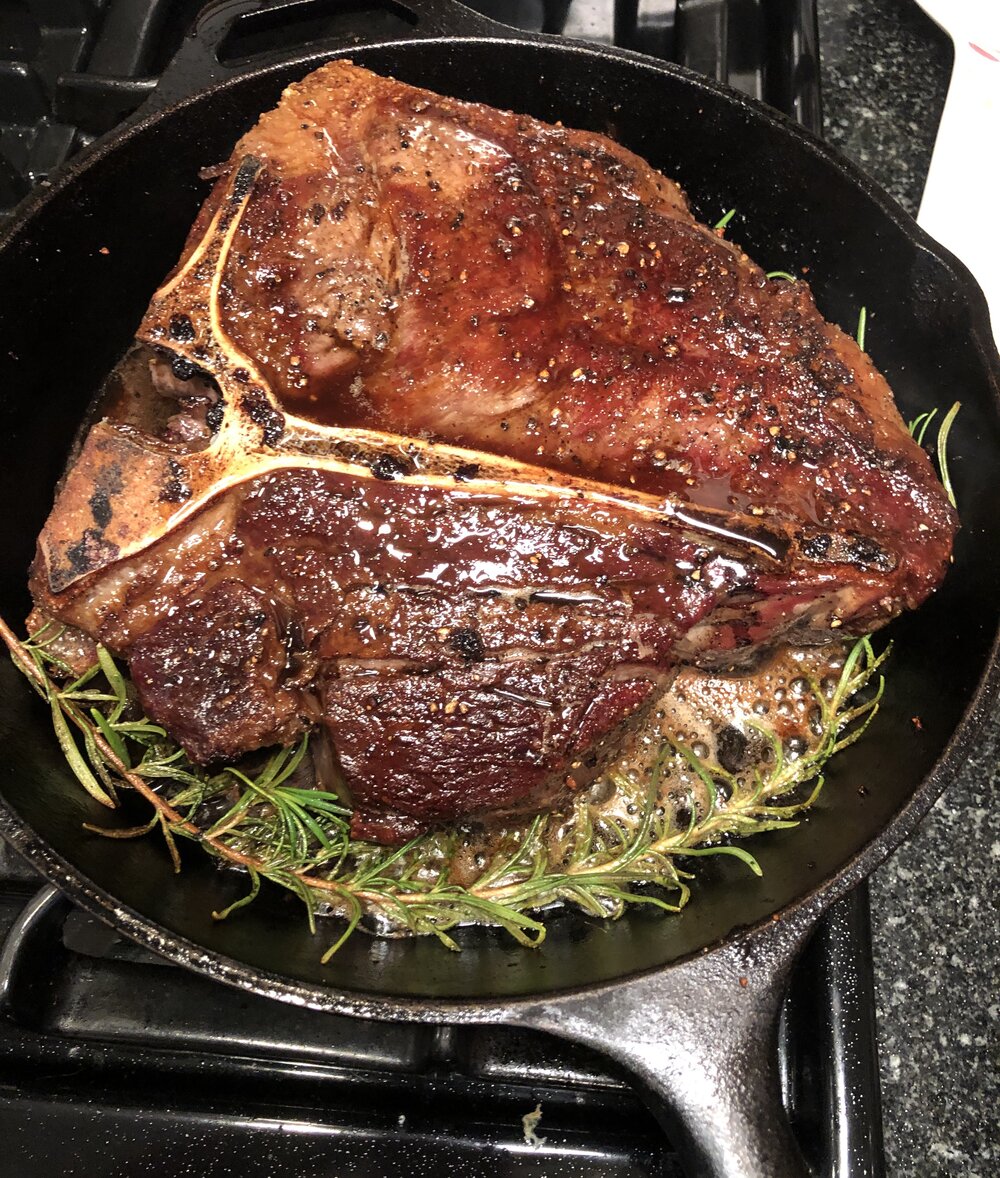
4.) Remove the steak from the oven when it’s cooked to the desired doneness, and transfer it to the screaming hot skillet (it should be smoking, it’s so hot!). Sear it on each side (it won’t take very long!) until it forms a gorgeous, golden brown outer crust, even using your tongs to bring the fat cap and other smaller sides of the meat into contact with the hot skillet - the more color, the more flavor. Once the steak is sufficiently crusted, quickly turn off the burner and remove the skillet from the heat. Immediately add a few Tablespoons of butter to the pan (it will melt instantly) and any desired herbs (we love a couple hearty springs of fresh rosemary) spoon the melted butter over the steak until the meat is coated in the butter.
5.) Remove the steak to a cutting board and allow it to rest for approximately 10-15 minutes once it comes out of the pan. Then slice it up and enjoy!
Print 5 StepsAs for wine to pair with all this meaty deliciousness? This is definitely Cab country, my friend! Yes, Cabernet Sauvignon, the signature red grape of California’s Napa Valley, is the perfect match for steak of this magnitude. It’s full-body, weighty tannins, opulent texture and complex flavors are perfect for meshing with the heavenly heft, fat and flavor of this gorgeous steak.
Some of my favorite California Cabs include the DAOU Paso Robles Cabernet Sauvignon ($25), Round Pond Rutherford Napa Valley Cabernet Sauvignon ($65), Mt. Brave Cabernet Sauvignon from Mt. Veeder ($99), La Jota Howell Mountain Cabernet Sauvignon ($150) and, for a super duper splurge, Harlan Estate’s The Maiden ($275) is an excellent choice. And while you may have seen the Cabernet pairing suggestion coming, you might not expect my next one: Rosé Champagne!

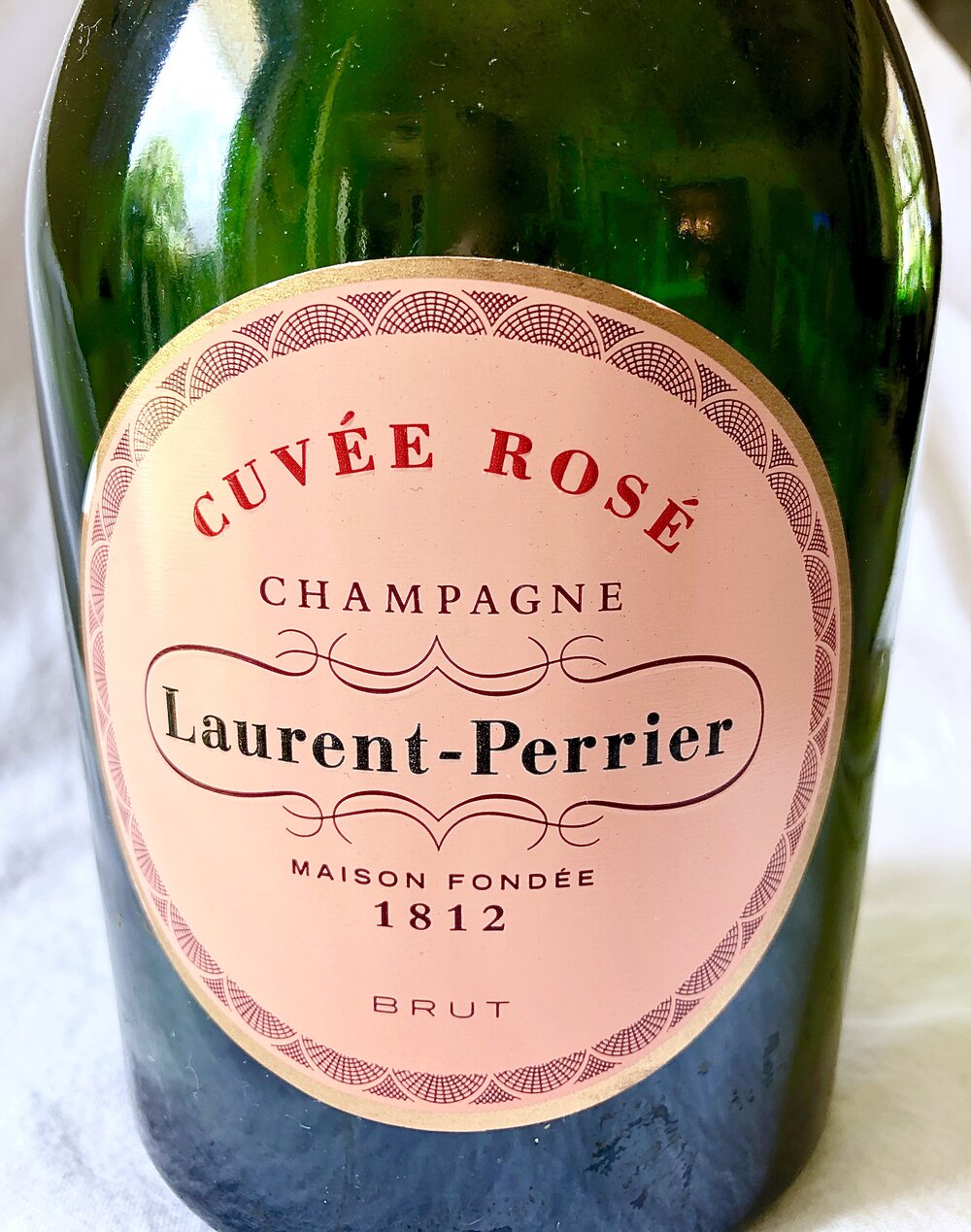
Yes, a Rosé Champagne is actually an excellent wine to pair with steak. In addition to actually containing some still red wine, which is how it gets its rosy hue, the Méthode Traditionelle (how Champagne gets its bubbles) also imparts a richness to sparkling wine that gives it tremendous texture and depth of flavor while it’s exhilarating bubbles essentially take the place of tannins. Some of my favorites include Piper-Heidsieck Rosé Sauvage ($52), Laurent Perrier Cuvée Rosé ($75) and Moët & Chandon Grand Vintage Rosé ($130).
Many thanks to the Hubs for introducing me to the deliciousness that is the “reverse sear” method! It has definitely become our preferred method of preparing steaks and I hope you enjoy it as much as we do xo
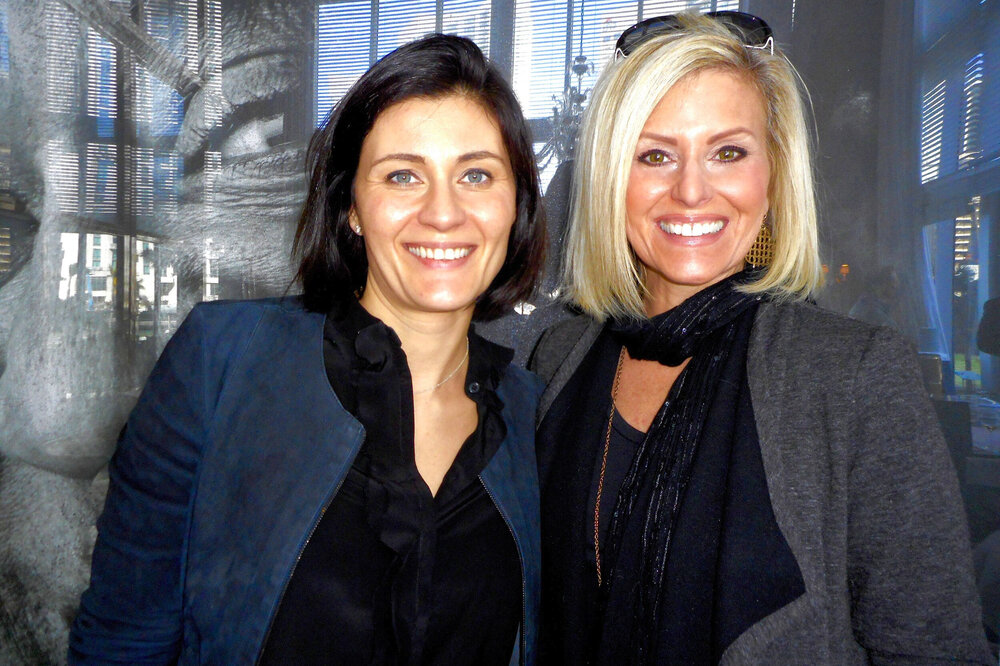
While our everyday wines are the vinous equivalent of a cozy blanket or comfy pair of slippers we slip into at the end of the day, at the other end of the spectrum are wines that are more akin to haute couture - think Chanel, Gucci or Dior.
These "haute" wines are so meticulously-made, terroir-driven and exquisite, they imprint themselves in your memory and make you instantly realize why people sometimes pay a LOT of money for wine! Such are the wines of Piedmont's iconic Gaja family.
Founded in 1859 by Giovanni Gaja, the estate's history and reputation are rooted in the meticulous production of wine from grape to glass. Family owned and operated since day one, Giovanni's great grandson, Angelo Gaja, is President of the winery today and much like Federico Fellini's contributions to Italian film, Angelo Gaja has had an utterly profound influence on his family's wines, as well as the culture of the Piedmont wine region. Ever the innovator, today at 78 years old Angelo continues to dream big with a focus on the future.
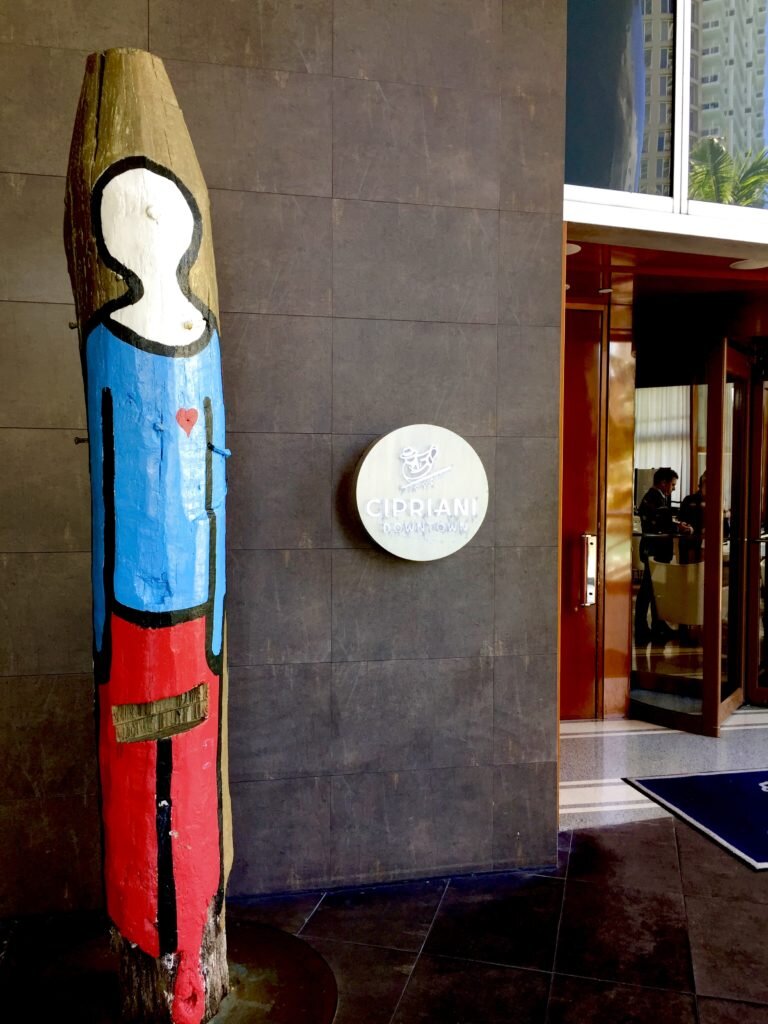
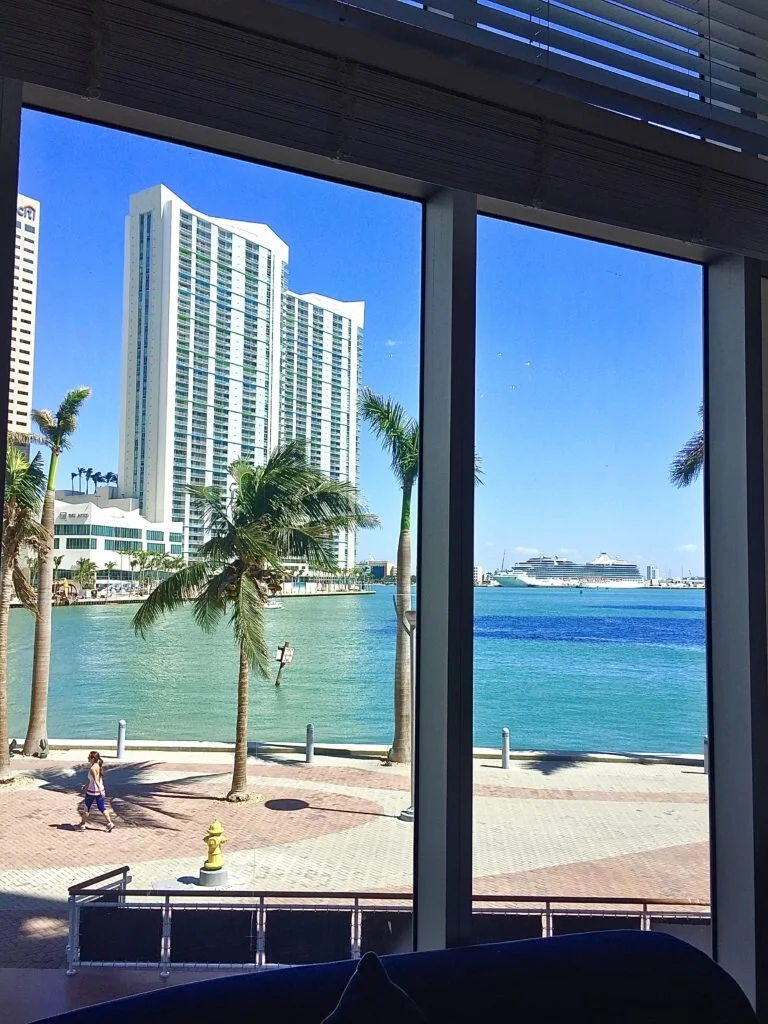
And while the entire Gaja family is involved in the day to day operations of the winery, since 2004 Angelo's eldest daughter Gaia, who represents the fifth generation of the family, has played an instrumental role in realizing the winery's goals. For the past fifteen years, she has been the international representative of the winery, traveling the world to spread the Gaja message and share her family's wines.
And on a glorious Spring day in South Florida, a distinguished and very fortunate group of wine professionals gathered for a very special tasting of the GAJA portfolio led by Gaia herself at Cipriani Miami. As we settled into our seats, it was impossible not to appreciate the gorgeous panoramic views of the Biscayne Bay and cerulean blue skies outside.
Soon Gaia proceeded to the front of the room to begin the presentation. Named for the Greek goddess of the Earth, Gaia is a striking beauty with raven black hair, luminous olive skin and sparkling blue eyes that recall the Sistine Chapel's iconic Delphic Sybil.

She began by quietly, yet firmly announcing, "This is one of my last trips to the United States." Needless to say, a hush fell over the room as we took a beat to process what she had just said.
Gaia continued in her melodic Italian accent, "Finally, my younger brother Giovanni is showing up at work. After university and nine months in New York working, my father said, ‘Enough working, you must come back', so Monday he starts. Giovanni is twenty-five and full of energy so he will take care of whichever travel has to be done." Apparently, after handling all the promotional travel for her family’s business since 2004, it's time for a well-deserved break!
“So this year is very special for me because it's the beginning of a new phase." Her declaration set the tone for the day’s tasting which was one of nostalgia, exploration and celebration of her family's rich history.
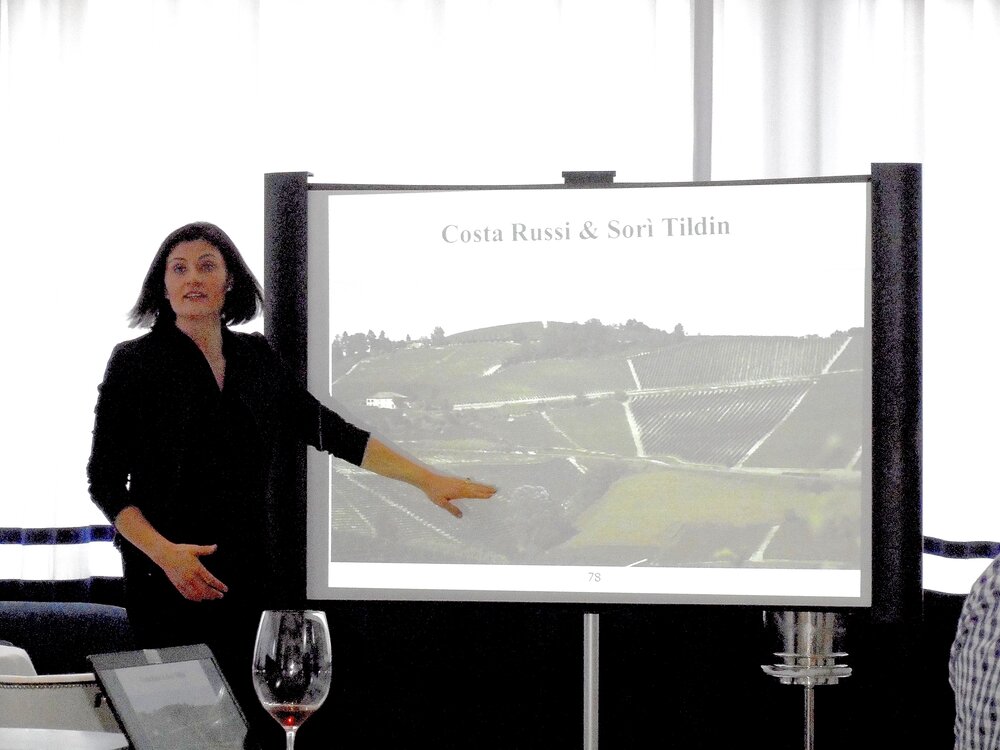
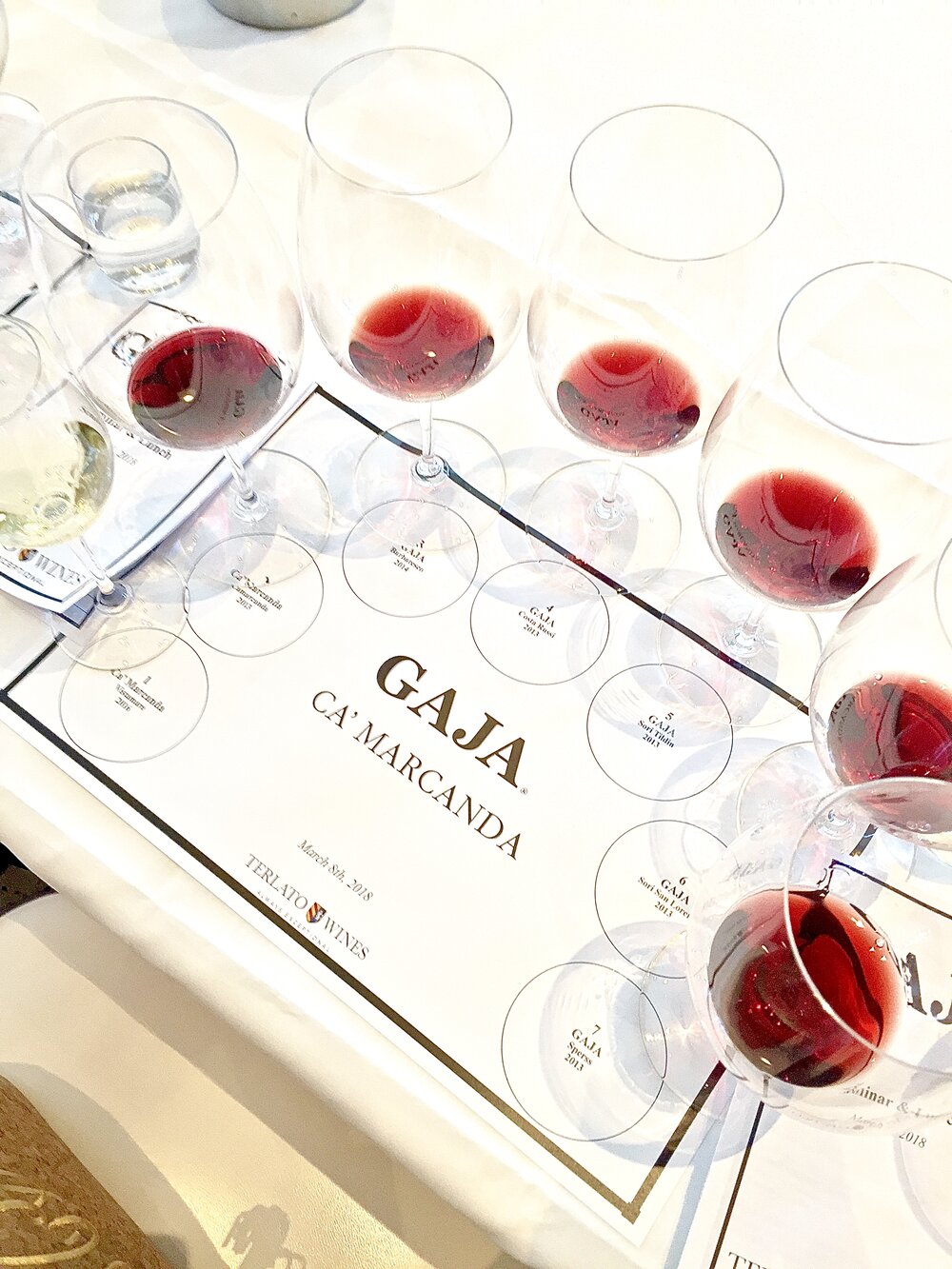
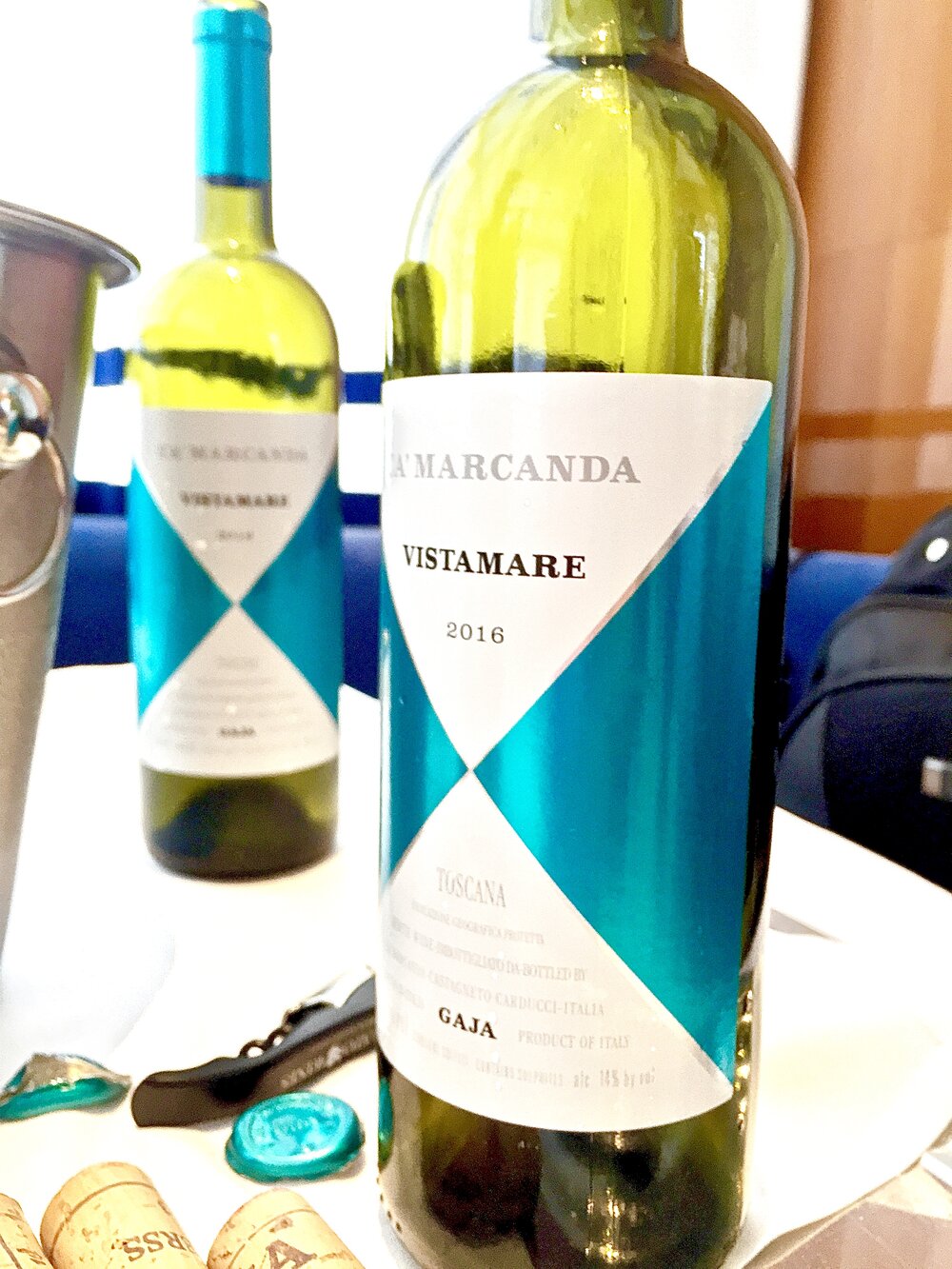
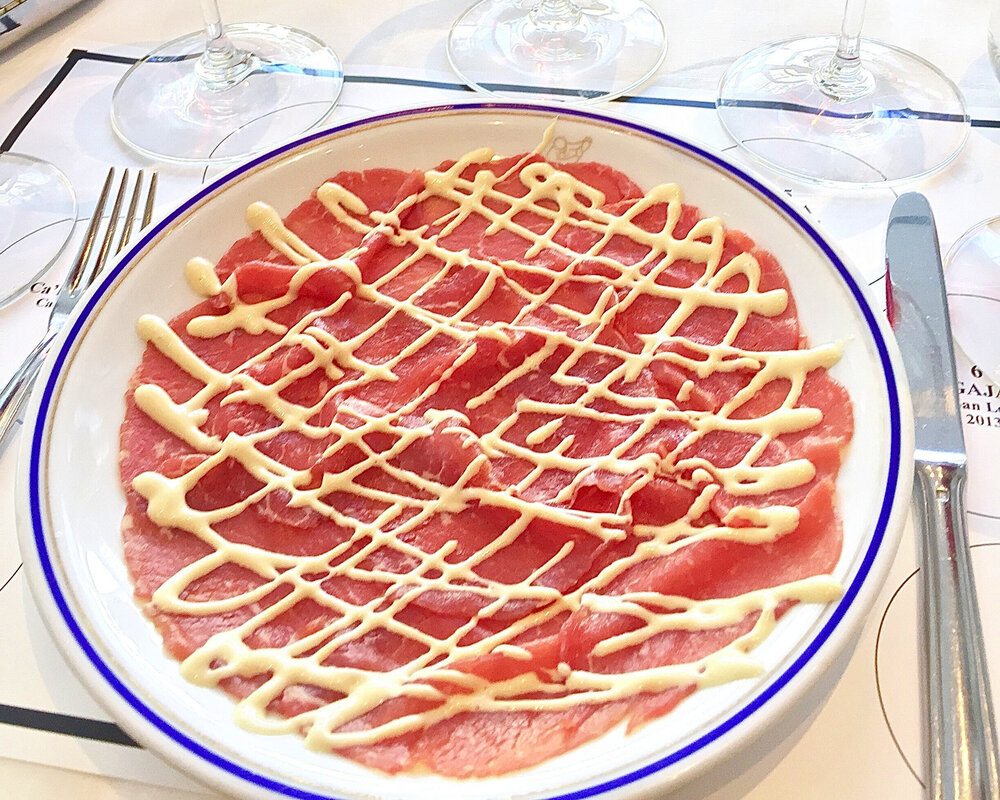
At a time when it was commonplace for farmers to sell their grapes a la négociant, Giovanni Gaja decided to keep his grapes and make wine under his own label. In the 1800's, this was a big decision that represented the first glimmer of the Gaja family's potential and entrepreneurial spirit.
The family winery was founded in 1859 in Barbaresco, which has always existed in the shadow of the more glamorous and famous neighboring Barolo region, 20 kilometers away. "Our contribution was to help Barbaresco stand up and show the beauty that it has," and for three generations, the family did just that, making wine solely in this region which helped establish the village and put it on the map.
"I think family businesses are the keepers of tradition, the keepers of a style that can go on generation after generation." ~ Gaia Gaja
The charming Gaia also provided insight into the inner workings of her family’s business today. Unlike other family-run wineries or businesses in which each sibling presides over their own “domain,” she and her sister, brother and Mother each do a little bit of everything. Her father always told her she was Vice President to which her Mother replied, “Of course he made you Vice President, so everyone would know he is President!”
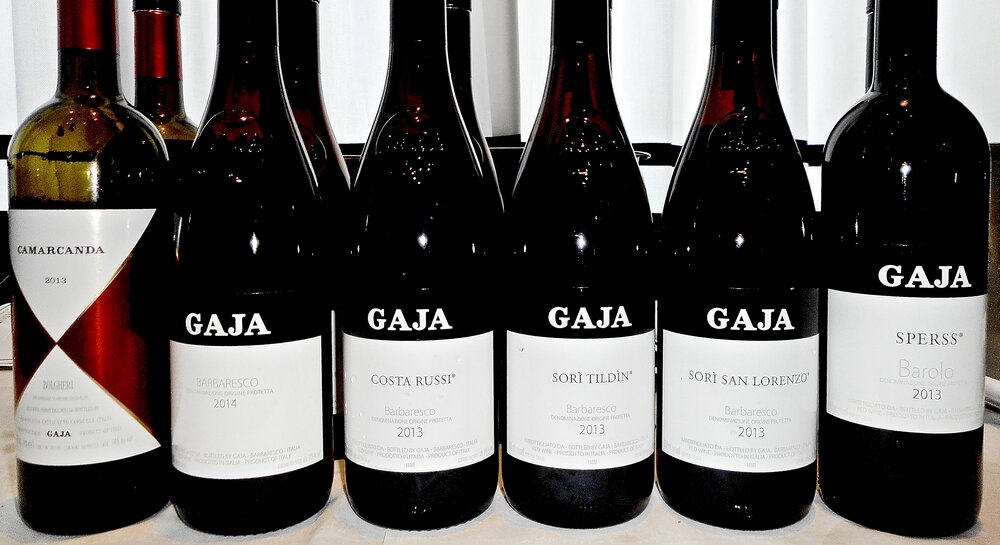
Since the early days of Barbaresco, the family has since acquired land in Barolo and two estates in Tuscany, one in Montalcino, the other in Bolgheri. The Gajas own all of their own land and refuse to purchase any grapes or juice which was a big decision made by the family in 1961. And while this monumental decision had certain ramifications which I'll address later, it was ultimately important for the greater good of the winery and quality of the wines.
And if you've ever wondered what it's like having a living wine legend as a father, Gaia was very forthcoming about some of her favorite things about her Dad, "He is always optimistic regardless of age. Even now at 78, he’s the one always projecting into the future. He’s dreaming and building and working on projects that’ll take 20 years from now."
Then, she addressed a recent development the wine world's been buzzing about, "Last year my father bought 20 hectares of land in Sicily [and] it's the first time we buy land with someone else. But the dream is little by little to start to produce wine on Etna."

Based on Angelo's longstanding history as a maverick, this was only partly surprising. After assuming the reins from his father in 1961, Angelo Gaja implemented a plethora of controversial changes that were met with great resistance from the traditional Piedmont winemaking community, including his own father. Inspired by France and California, he began introducing techniques such as malolactic fermentation, green harvesting and using barriques to age his wines.
He also introduced international grape varieties such as Cabernet Sauvignon and Chardonnay which further drove a wedge between the two sides. Thankfully, peace eventually took hold as many of Gaja's ideas produced spectacular, critically acclaimed wines. Today, many of his innovations coexist with traditional techniques to form a very happy vinous medium.
Gaia addressed her father's perception of change, "Change often means going far away from your origins and not being authentic anymore, and is always perceived as negative. But for someone like my father...there’s no improvement without change, and in his 56-year career he has touched every aspect of our winery and changed it completely."
"And this, for me, has been a big lesson in life, because usually you change things when things don’t work. But when my father took over the winery of my grandfather in 1961, the winery was successful and my grandfather was a very successful man. But regardless of that, when my father came in, he started to change everything. And so the wines have been very much a self-portrait of my father for all these years. He put his personality in everything…and this is something I admire of him." ~ Gaia Gaja
Gaia also explained the many facets to running a winery and how many consultants are needed to help with issues ranging from honeybees to compost worms (it turns out California red earthworms are BETTER than Italian earthworms!). The one thing they've never needed to hire consultants for, however, is vineyard management, "We remain the expert of our vineyard."
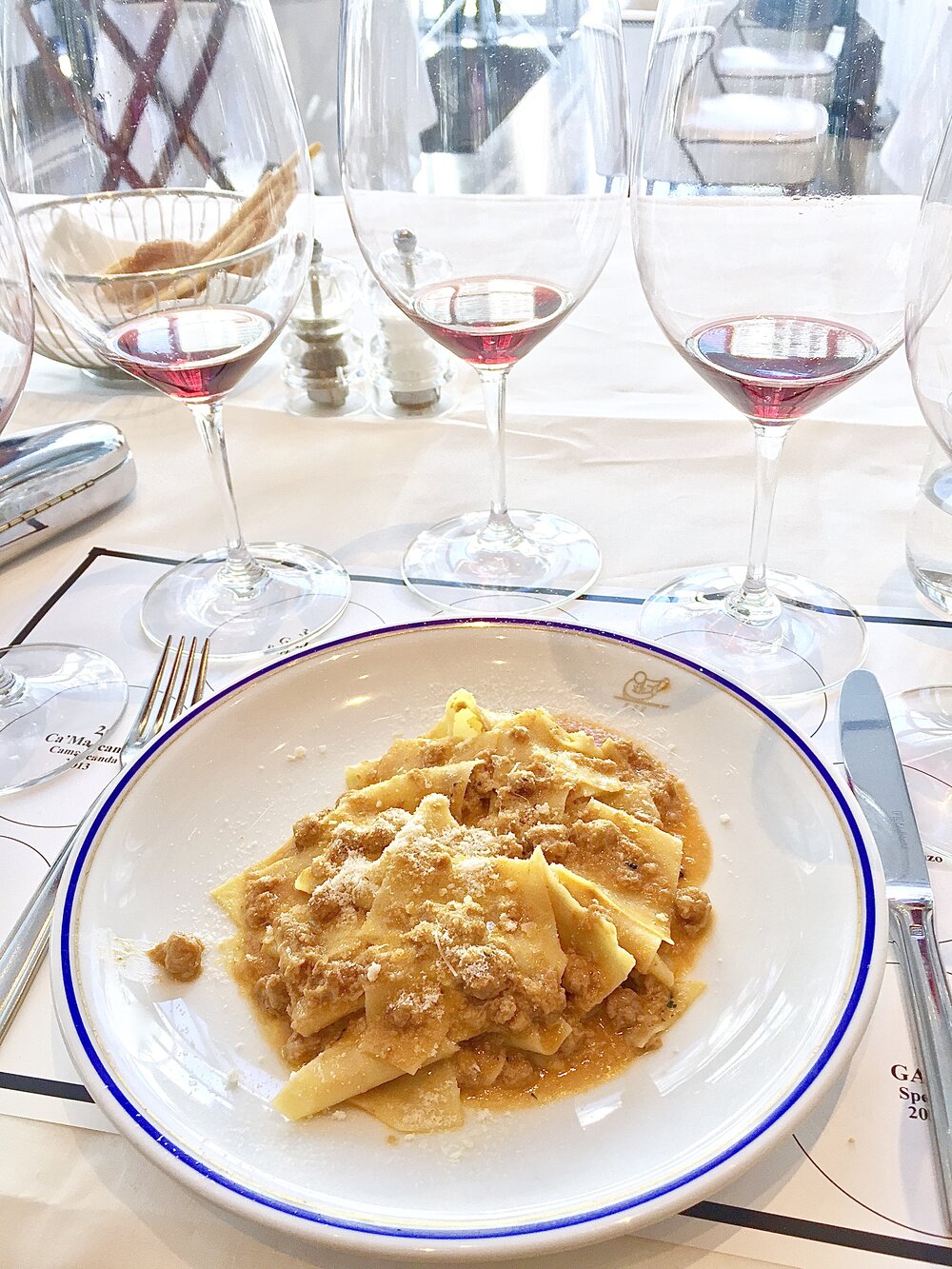

And while you may be inclined to think of vineyard management as simply managing vines and their resulting grapes, that would be a gross understatement, "Viticulture is a big part of what I talk about because it is a big part of our job." We were thoroughly entranced listening to Gaia discuss the diverse ecosystem that makes up a vineyard and the hard work, focus and attention to detail it requires to manage. Essentially, their approach boils down to one basic essential tenet which is to cultivate life.
"There is so much life and it’s beautiful to understand the intelligence in nature." ~ Gaia Gaja
She compared a piece of land to a universe where the vines are part of a community and enjoy an incredible social life. They communicate through "funguses" that attach to the roots and act like telephone lines. In this way, they are able to exchange information as well as nutrients. Whether it's how to fight a particular virus or exchange potassium, all of these individual components of life are essential."
Cultivating life makes vines more resilient and able to fight and win and be healthy without us having to do an artificial intervention." The birds, grasses, insects and fungi that coexist in the vineyard are all important to this approach and the observations of the family have led to some pretty interesting approaches to vineyard management:
Since 2004 they have not cut the grass in the vineyard because freshly cut grass drinks water from the ground, taking it away from thirsty vines.
Leaving the grass uncut not only leaves more available water, but also protects the ground from the heat of the sun.
Aerating the soil can sever roots and connections between vines and other plants so it is forbidden.
The cypress trees are like apartments for small birds that in turn eat harmful insects that threaten vines.
50 beehives in the vineyards provide great pollination bringing life and biodiversity to the vineyard.
Using the right kind of worms to compost the manure.
Their approach to labor is also unique – as if that was any surprise! While many wineries hire teams to help out during harvest, Gaja’s workers are employed year round. “We don’t have seasonal workers which is unusual because there are many months where there is nothing to do, but our team is full time for two reasons: (1) it’s impossible to cultivate culture in people that come and go, so if they are not with us always they don’t understand; and (2) we don’t only take care of vines, our job is to cultivate life. Every day we have to come up with ideas to come up with ideas to cultivate life and implement them.”
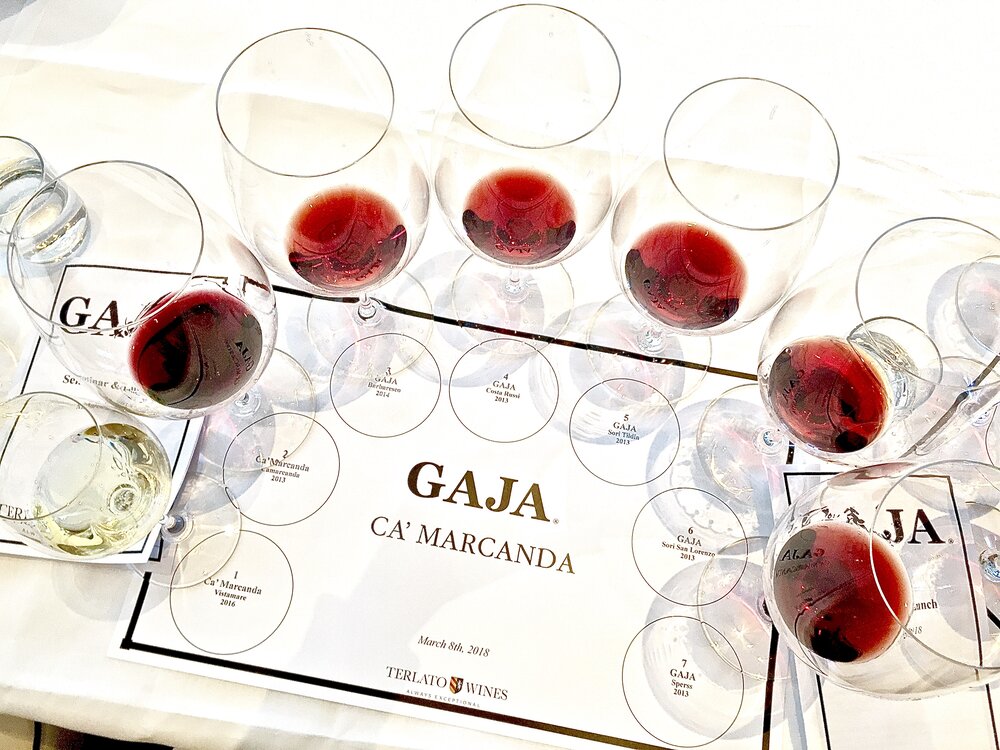
Our tasting consisted of seven wines from the Gaja portfolio representing their estates in Tuscany, Barbaresco and Barolo. As it turns out, the 2013 vintage was a crucial one for the Gaja family in terms of changes made to their most iconic wines. These changes were implemented by Angelo's three children, and may just represent the official ushering in of this new generation of the family. Elegant interpretations of classic Italians dishes from Cipriani's menu were sent out at strategic intervals to pair with the magnificent wines as well.
2016 Ca' Marcanda Vistamare Toscana IGP ($70) Our tasting began with a stunner from Tuscany whose name evokes the sunny Tuscan coast in Bolgheri. Our only white wine of the day was a blend of two grapes, 60% Vermentino and 40% Viognier. With such opposing elements, the grapes created one gorgeous wine with fragrant, floral aromatics of citrus and peach and lush notes of honeyed citrus, peach, ginger and spice. According to Gaia the next vintage would likely include the Fiano grape which had performed very well in the hot, dry 2017 season.
2013 Ca' Marcanda Camarcanda Rosso Bolgheri DOC ($175) Hailing from Gaja's Tuscan Bolgheri estate, our only non-Nebbiolo red wine of the day was a beautiful blend of 50% Merlot, 40% Cabernet Sauvignon and 10% Cabernet Franc which featured succulent, savory notes of plum, red currant, cherry, leather, olive and spice. This elegant offering also exhibited delightful, woodsy overtones and supple tannins which synchronized sublimely on the lengthy finish.
Gaia explained, "Toscana wines are always cheerful, juicy and round. [They are like] people who have an easy childhood, they know only cheerfulness and friendliness. Piedmont, they have more often a tough childhood, tough, tension inside and you can see the difference in intensity."
“Nebbiolo is a very challenging variety, it challenges us in the vineyard, keeps challenging us inside the winery, and then keeps challenging us in the glass." ~ Gaia Gaja
2014 GAJA Barbaresco DOCG The flagship wine of the Gaja family is crafted from 100% estate grown Nebbiolo sourced from 14 different vineyards. It proved to be a wonderful ambassador with fragrant aromas of black fruit and anise followed on the palate by lush notes of black cherry, licorice, tobacco and spice.
To demonstrate the difference between Cabernet, Merlot and Nebbiolo, Gaia encouraged us to compare this Barbaresco to the one before it, "The taste of the [Camarcanda] is everywhere basically, it’s on your cheek on your palate, it’s on your tongue...it is very round and the taste is in the front."
In contrast, "With the Nebbiolo the taste is not in your mouth, it’s like your mouth is clean, you can almost feel the fresh air. You have this sensation for two reasons, first the taste is in your throat, that’s the big difference and it’s important to understand that about Nebbiolo - it has a discreet taste, it’s a wine that has great texture. That’s why we say Nebbiolo is a terroir variety because it’s not a loudspeaker, it stays back and is a good listener so it’s a variety that can really show terroir. Second, you can feel Nebbiolo is a fantastic cleanser, because the tannins act like a brush. They clean every side of your palate so the taste is in the back and the tannins they clean up in front."
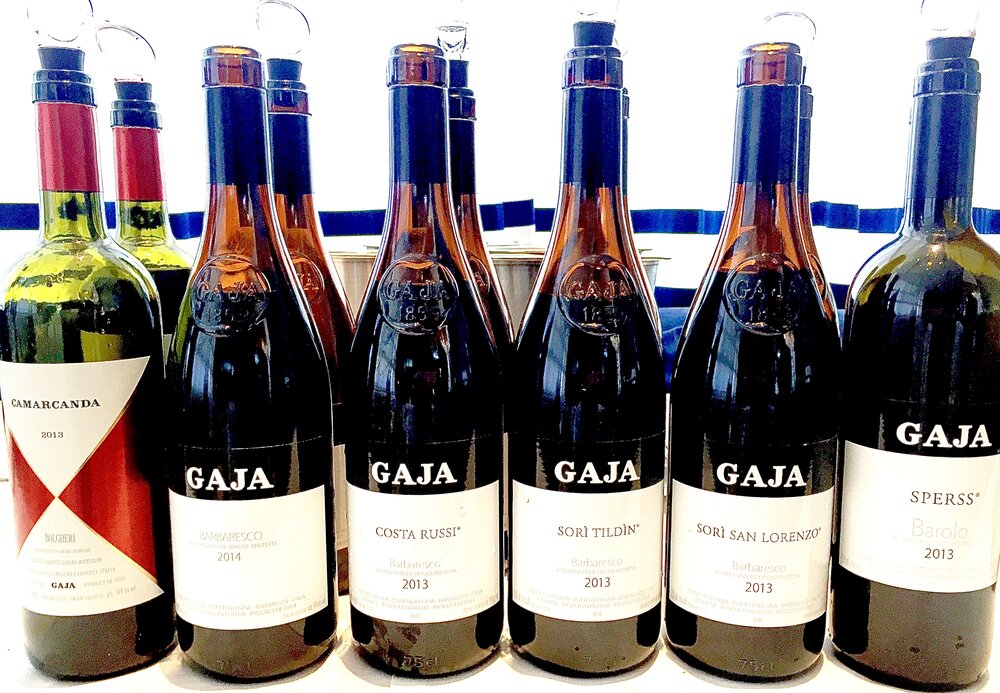
2013 GAJA Barbaresco Costa Russi ($475) Costa Russi was acquired by the family in 1967. "Costa" means the side of the hill facing the sun, and "Russi" for the Russian man who previously owned the property, "He worked for Fiat and designed their two most popular cars," Gaia shared. This wine and the next two represent Gaja's three single vineyards in Barbaresco. As of the 2013 vintage, all three of these wines have been restored to 100% Nebbiolo after decades of containing small percentages of Barbera as dictated by Angelo Gaja in the 1996 vintage. This decision to return to a pure expression of Nebbiolo was ultimately instituted by Angelo's three children and, as of this vintage, these wines are now attributed the Barbaresco DOCG status they so richly deserve.
This beauty dazzled with charming aromas of red fruit, roses and spice. You could easily linger on the nose of any of the Gaja wines indefinitely, it is vinous foreplay at its finest! The Costa Russi was simply stunning on the palate, exhibiting elegant notes of wild strawberry, pomegranate, anise and spice which culminated in a unified and glorious finish. I can only imagine the complexity and nuance this wine will develop in 10 to 20 years from now!
"For me, the wines are a memory of place and a moment." ~ Gaia Gaja
2013 GAJA Barbaresco Sorì Tildìn DOCG ($475) Also acquired by the Gaja family in 1967, Gaia explained, "the Sorì Tildìn vineyard site is named for, 'Sorì' which means hilltop, and 'Tildin' for the grandmother of my father. Her name was Clotilde Rey and we wanted to name a wine after her."
This wine was quite distinct from the Costa Russi whose vineyard is located just below it. Aromatics of dark, brooding black fruit and anise wafted from the glass while on the palate, notes of dark cherry, plum, licorice, tar, leather and spice accompanied sumptuous, velvety tannins and a lush mouthfeel. Like the Costa Russi, this is also the first vintage the Sorì Tildìn has foregone the inclusion of Barbera, resulting in a more focused expression of its unique vineyard site and the conference of the coveted Barbaresco DOCG, instead of the Langhe Nebbiolo DOC.
2013 GAJA Barbaresco Sorì San Lorenzo DOCG ($475) Named for the patron saint of Alba's cathedral, the Sorì San Lorenzo vineyard was acquired from the parish of Alba in 1964. This wine made history when it became one of the earliest single-vineyard bottlings of Nebbiolo in Piedmont with the 1967 vintage. However, from 1996-2011 it also included 5% Barbera.
Much like the Costa Russi and Sorì Tildìn before it, the 2013 vintage of this wine also marks a return to 100% Nebbiolo, exhibiting the purity of this exceptional vineyard site and the classification of the Barbaresco DOCG. This offering falls squarely in between the two previous wines, boasting a combination of red and black fruit as well as notes of tar, spice and minerals. The result is a broad wine of great structure, depth and texture.
2013 GAJA Barolo Sperss ($250). As with all of the wines in the GAJA portfolio, their names and those of their respective vineyards bear historical significance to the family. In Piedmont parlance, "Sperss" is a term affectionately used to denote nostalgia for precious things lost with time and serves as an homage to the origins of the winery and the generations who built it.
Of all Gaia's familial anecdotes that day, the last was perhaps the most moving. At ninety-four years old, her grandfather, Giovanni Gaja, was in excellent physical shape, however, in the last 4-5 years of his life, he had developed Alzheimer's disease. And while he could no longer remember Gaia or her father, there were two things he never forgot, "The first was my grandmother, even though he thought he himself was 27 years old, that old lady with the white hair was his wife. He never mistook her for anyone else."

The second was the village of Serralunga, "[My grandfather] had a very tough mother and every year when he was a kid he was allowed to go help family and friends in Serralunga to pick their grapes. So for 10 days he was allowed to stay far from his mother in this little village and pick grapes, make some pocket money and stay out as late as he wanted and be free."
This meant so much to him that even when he spoke about it in his waning years, "a light was turning on in his eyes and he started to talk precisely about Serralunga. Those ten days a year were some of the best years of his life. And so this sentiment, this nostalgia he always had is the reason why we call the wine Sperss, or nostalgia. Even though he couldn’t understand anymore how important it was that we built a vineyard there in Serralunga."
And it was indeed very important and historic for the family to finally acquire a vineyard in Serralunga. Once the Gajas decided to stop purchasing grapes and only use estate grown fruit to make their wines in 1961, it marked the first time in history Gaja no longer made a Barolo. In fact, it was nearly three decades until the family purchases the thirty acre plot in Serralunga d'Alba and renamed it Sperss. It was truly the realization of a multigenerational goal.
As if there weren't enough new developments happening with the Gaja's, the 2013 vintage also marks the return of the Sperss Barolo to full appellation status as well. The 2013 Sperss was impressive in its intensity, exhibiting aromas of dark fruit, anise and earth. Mighty tannins provided handsome, broad shoulders to support classic notes of black cherry, rose, tar, licorice and truffle. This wine is sheer powerful perfection and while thoroughly enjoyable now, will surely reward after years in the cellar as well.
The end of the tasting was bittersweet indeed. We were so grateful for our amazing afternoon with Gaia and thoroughly appreciated her taking the time to share her family's remarkable history and wines with us, yet, we were sad that it marked the end of a time after which we would not be seeing her as much. And while we look forward to one day meeting her brother Giovanni and welcoming him to South Florida, this was surely the time for another sip of the exquisite Sperss Barolo.
What wine has made an indelible impression on your life? Is there a wine you’re excited to try? I’d really love to know so please let me know in the Comments section below. xo



Key to learning about wine, sweet wines in particular, is a little term called Residual Sugar which is our Wine Word of the Week. While there are many factors that ultimately determine the perception of sweetness in wine, residual sugar is the actual amount of sugar left in a wine after the alcoholic fermentation - which can end in a variety of interesting ways.
During fermentation, yeast converts sugar into (1) alcohol and (2) carbon dioxide (yeast + sugar = alcohol & CO2). The carbon dioxide gas is generally allowed to dissipate (except in the case of sparkling wine) and the fermentation process is complete when either: (1) the yeast consumes all of the fermentable grape sugars, resulting in a dry wine, (2) the alcohol level becomes too toxic for the yeast and it dies, leaving some residual sugar in the wine; or (3) the winemaker halts the fermentation prematurely. In fortified wines for example, the winemaker halts the fermentation by the addition of a neutral grape spirit which kills the yeast, leaving oodles of residual sugar in the finished wine.
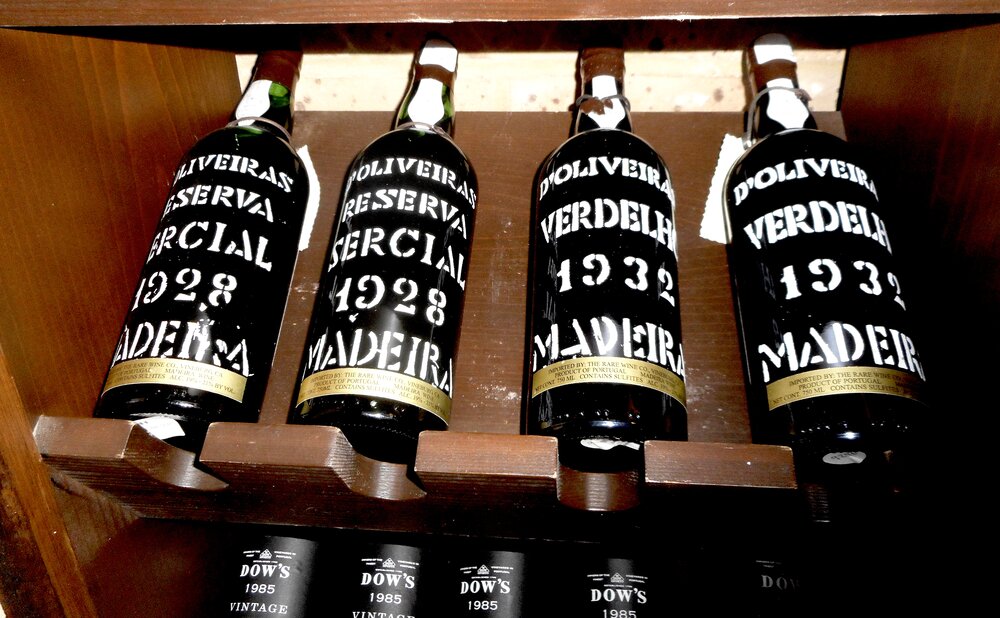
Residual sugar is often measured by either (1) percentage, or (2) grams per liter (aka g/L). Generally speaking, the threshold level for a wine to be considered sweet is around 35-45 g/L, although many sweet wines actually far surpass 150 g/L! And it's not uncommon for dry wines (dry meaning "not sweet") to contain low levels of residual sugar at imperceptible levels (i.e. 10 g/L), since some sugars are unfermentable.
WINE SNOB ALERT: Many Wine Snobs will refer to residual sugar as "RS" especially when they're in the company of someone they are trying to impress or intimidate. They've also been known to snidely ask the uninitiated, "Hmmm, do YOU detect some RS in the wine?" To which you should confidently reply, "Hmmm, I don't know, do YOU?"
Other factors can also affect the perception of sweetness in wine including acidity, tannin and alcohol. Acidity and tannin tend to mitigate the perception of sweetness, while alcohol can actually increase it. Some high acid wines that have high levels of residual sugar, such as Vouvray from the Loire Valley and German Riesling, can be perceived as dry because the sweetness is balanced by the acidity. Such is the case with sparkling wines as well.
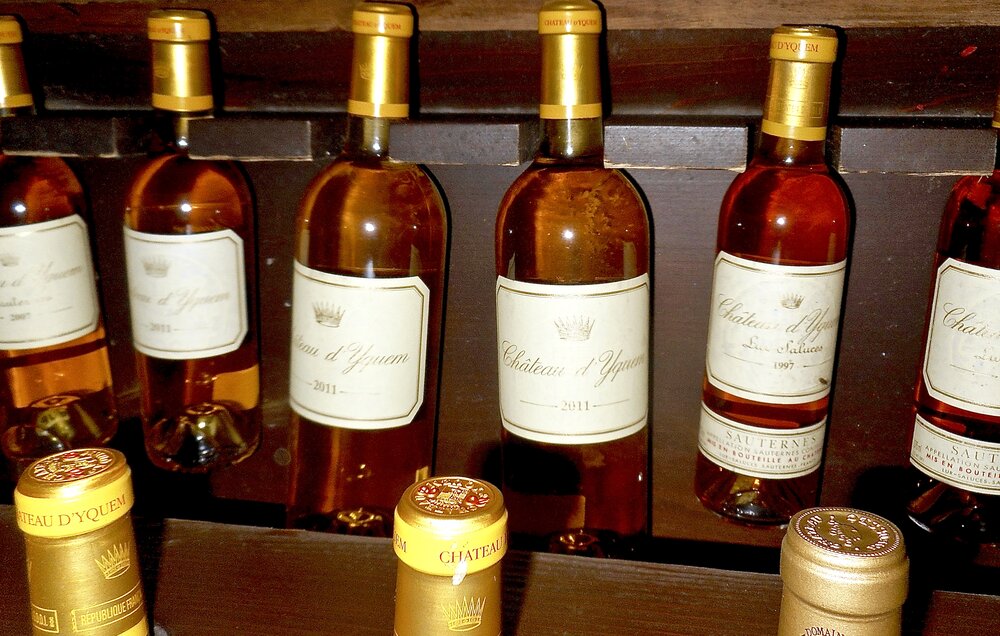
I hope you enjoyed learning about residual sugar, my latest Wine Word of the Week! And if you happen to know any wine lovers who'd like to learn more about wine, please feel free to share this post with them. And if there are any “wine words” you’d like to learn more about, please feel free to share them in the Comments section below and I'll do my best to demystify them for you.
To see previous WWOTW posts, please click here and, as always, thanks for reading!

Audrey Hepburn's legendary tiara in Breakfast at Tiffany's. Julia Roberts' dazzling diamond and ruby necklace in Pretty Woman. Marilyn Monroe's sexy signature Max Factor Ruby Red lipstick in Some Like it Hot.
The perfect accessory can truly take a look from "meh" to "MARVELOUS," and the same can be said for food as well. You see, crispy prosciutto IS the culinary equivalent of those glamorous accoutrements and can transform a dish in much the same way.
Yes, my fashionable foodie friend, I just compared crispy prosciutto to some of the most legendary fashion accessories of all time - BUT - once you try it I think you'll agree, its salty, savory deliciousness can truly elevate a dish to a whole new level. But first, take a sip of wine (or a deep breath) and let me give you a little backstory.
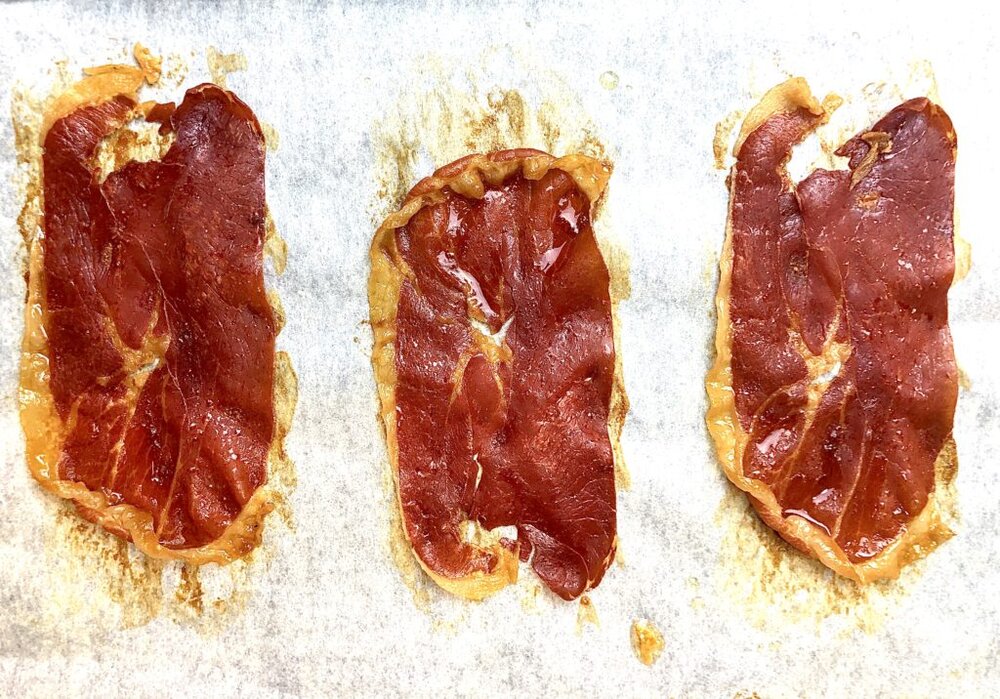
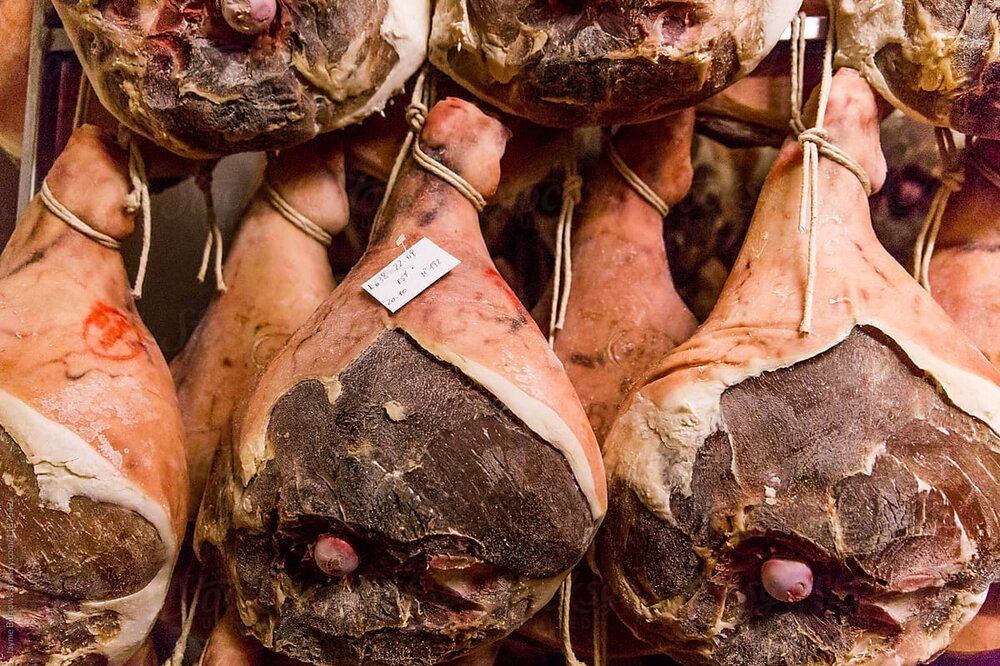
As you may or may not know, prosciutto is an Italian, dry-cured ham made from the hind legs of specially bred pigs. Prosciutto di Parma from Italy's Emilia-Romagna region is widely considered the gold standard and, like many Italian DOC wines, it must follow very strict production criteria that are mandated by law in order to merit its distinguished designation. Prosciutto is also produced in other regions of Italy (i.e. Prosciutto di San Daniele and Prosciutto Toscano) and, is even produced in the United States now as well (i.e. Rhode Island, Iowa, Seattle).
This decadent, stylish ham is much beloved for its slightly salty, sweet, nutty flavor and silky, buttery texture. As the moisture evaporates during the drying and curing process, the flavors of the ham are concentrated which is why it's best to slice prosciutto thinly. And it's the ham's hallmark marbling that imparts a gossamer-like mouthfeel to each heavenly slice. Like wine, prosciutto also tastes slightly different depending on where it's from - each region exhibits its own uniquely delicious, hammy terroir.
Thankfully, crispy prosciutto is much easier to make than diamond jewelry and is way more delicious than red lipstick! All you need to make it is a baking sheet, parchment paper (NOT wax paper!), a package of your favorite prosciutto and a hot oven and you're only minutes away from prosciutto heaven.
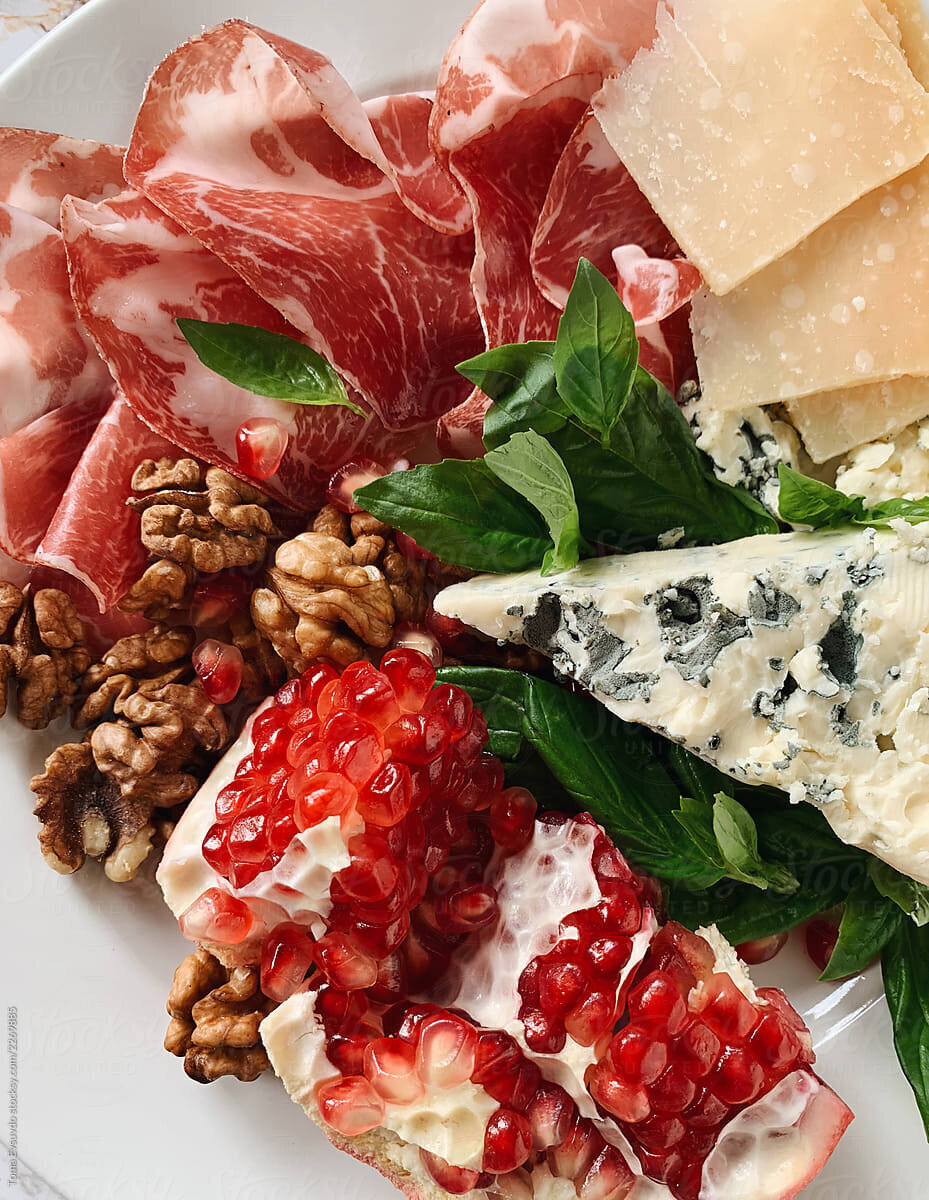
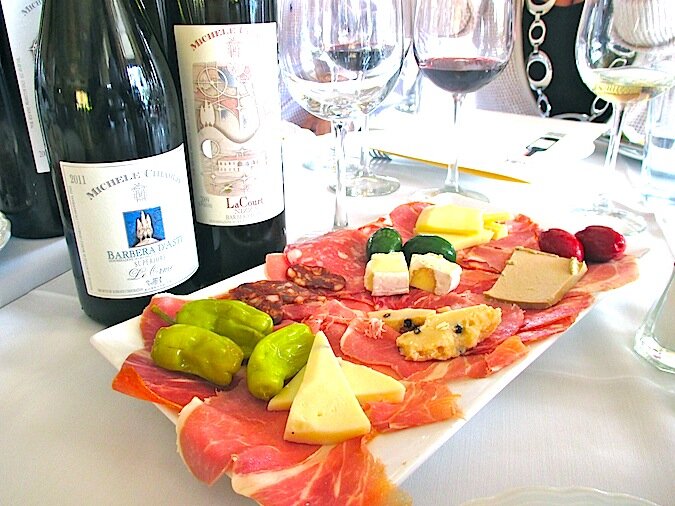
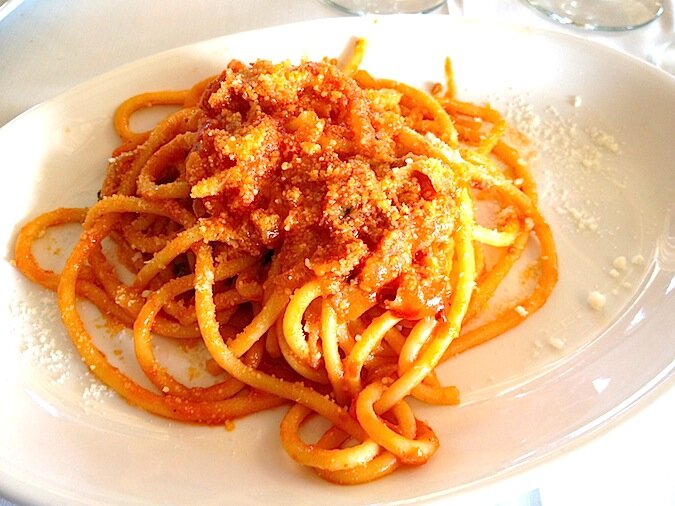
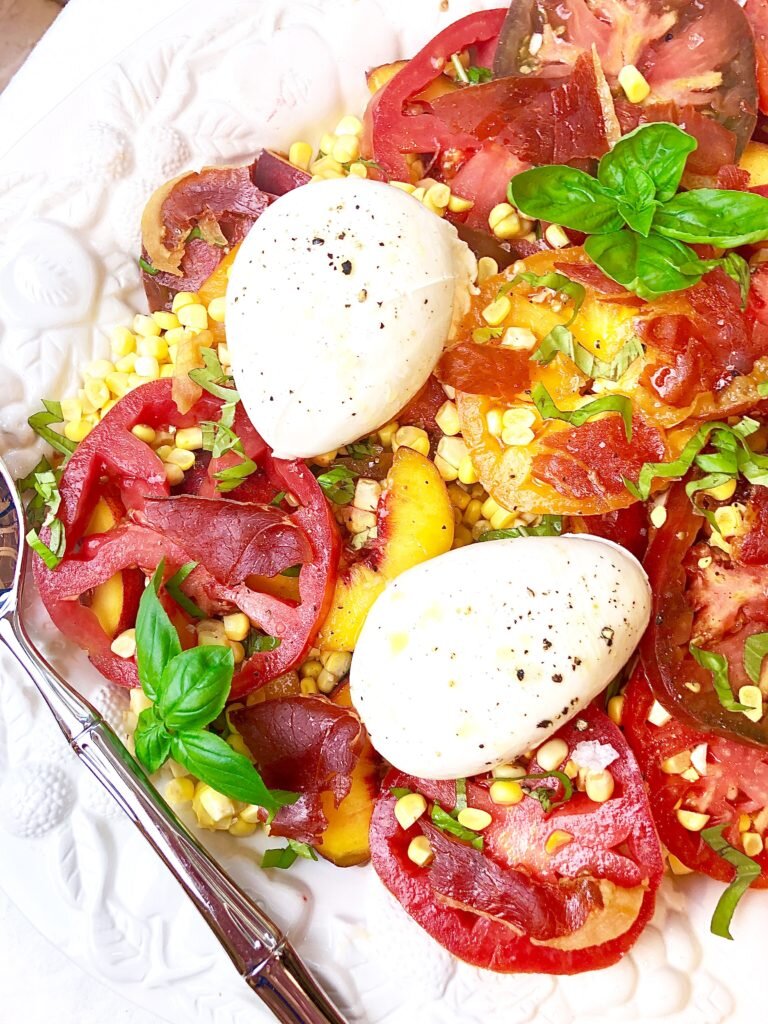
When it comes to pairing crispy prosciutto-laced dishes with wine, here are three essential tips:
1.) Fruity Rosés + off-dry White Wines: Due to the curing process, prosciutto has a delightfully subtle saltiness that's intensified as it crisps up. So, if you're a fan of combining salty and sweet flavors like I am (i.e. chocolate + peanut butter, kettle corn, blue cheese + Sauternes), opt for fruity Rosés (or "Rosatos" as they're known in Italy), and off-dry white wines like Chenin Blanc, Riesling and Fiano di Avellino. When crispy prosciutto is used in a dish featuring glorious fruit like this Heirloom Tomato, Peach + Corn Salad with Burrata - the combination is truly out of this world!
2.) Sparkling Wine: Palate-cleansing bubbles are perfect for cutting through fat and since prosciutto is so decadently marbled, both Brut and Rosé sparkling wines, are an excellent choice. And since the fat in Crispy Prosciutto takes on a slightly nutty flavor as it crisps, Franciacorta and Champagne, which also tend to exhibit an inherent nuttiness due to the way they're made (Methode Traditionelle), would make excellent choices as well. Think Spaghetti Carbonara with crispy prosciutto and a delightful sparkling wine - YUM!!!
3.) Red Wines: The tannins in red wine are legendary for their ability to stand up to and cut through fat. However, prosciutto's plentiful fat is delicate and buttery so the perfect red wines pairings are those with gentle, medium-bodied tannins such as fruity Barberas from Piedmont, any incarnation of Tuscan Sangiovese such as Chianti Classico or Rosso di Montalcino, and frothy, savory Lambrusco from prosciutto's birthplace, Emilia-Romagna. Picture Coal-fired Pizza adorned with fresh tomatoes and basil then crowned with glistening shards of crispyprosciutto or a heavenly dish of Bucatini All'Amatriciana -Mangia!
I hope you enjoy this (highly addictive) recipe for crispy prosciutto as much as we do! And if you love to cook, eat and drink wine too (and I'm guessing if you've made it this far in this post that's a YES!) simply click here to sign up for my weekly newsletter that features seasonally-inspired recipes, wine recommendations and tips and tricks for mastering wine. Pinky swear I won't sell your information to buy more prosciutto either. Buon appetito!!!
Print Recipe"CRISPY PROSCIUTTO: THE PERFECT CULINARY ACCESSORY"
Author: STEPHANIE MISKEW | THE GLAMOROUS GOURMET
Crumble crispy prosciutto over salads, serve with fried eggs and/or enjoy as a decadent snack!
Ingredients
4 oz. of prosciutto, thinly sliced
Instructions
Preheat oven to 375 degrees.
Line a baking sheet with parchment paper. Lay 4 prosciutto slices (or as many as will fit) on parchment so they lay flat + are not overlapping.
Bake for 10-12 minutes or until the meat + fat are darker in color, being careful not to burn.
Transfer slices to paper towel-lined plate to drain and repeat until all slices are cooked.
The cooked prosciutto will crisp up as it cools.